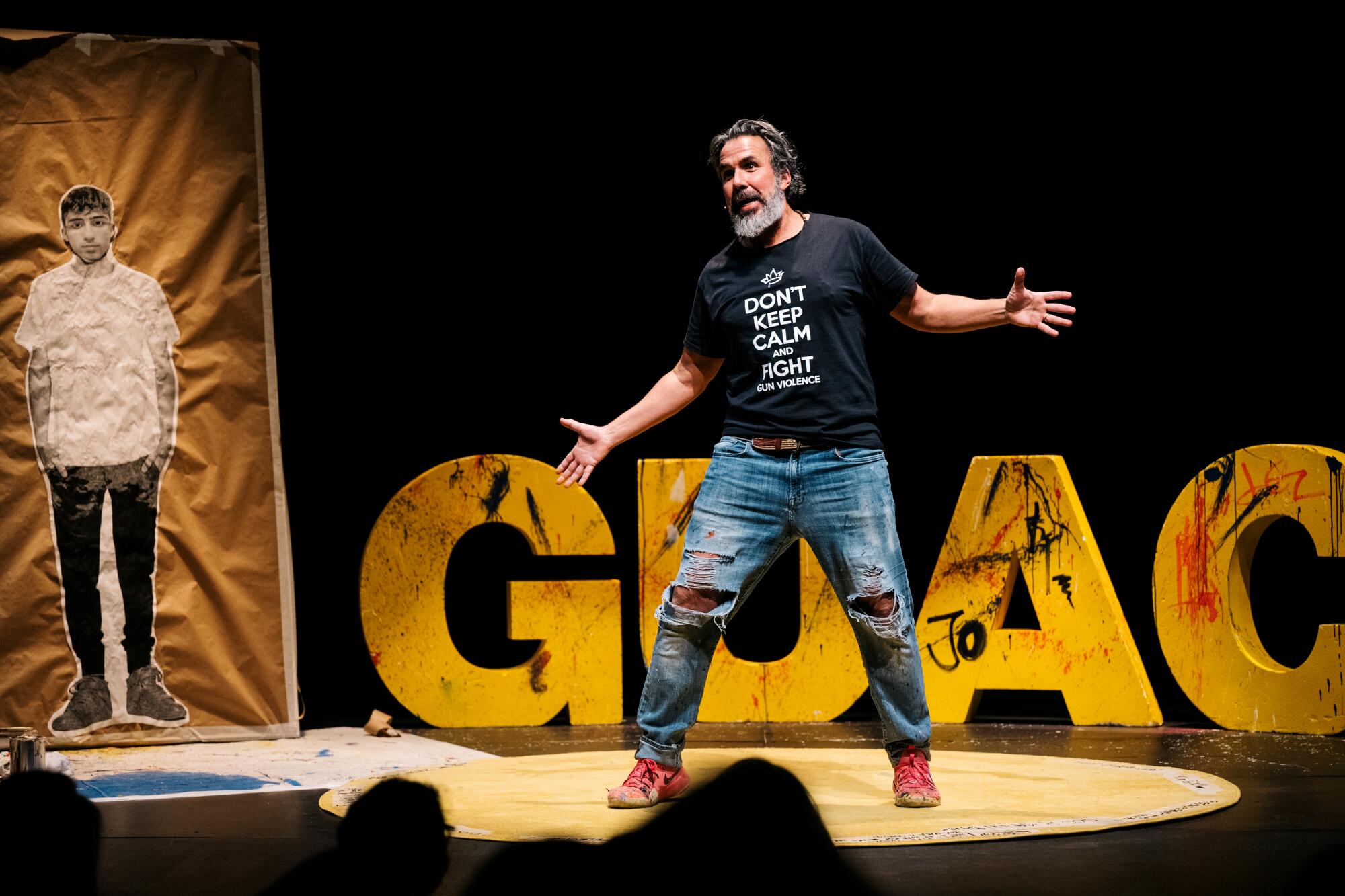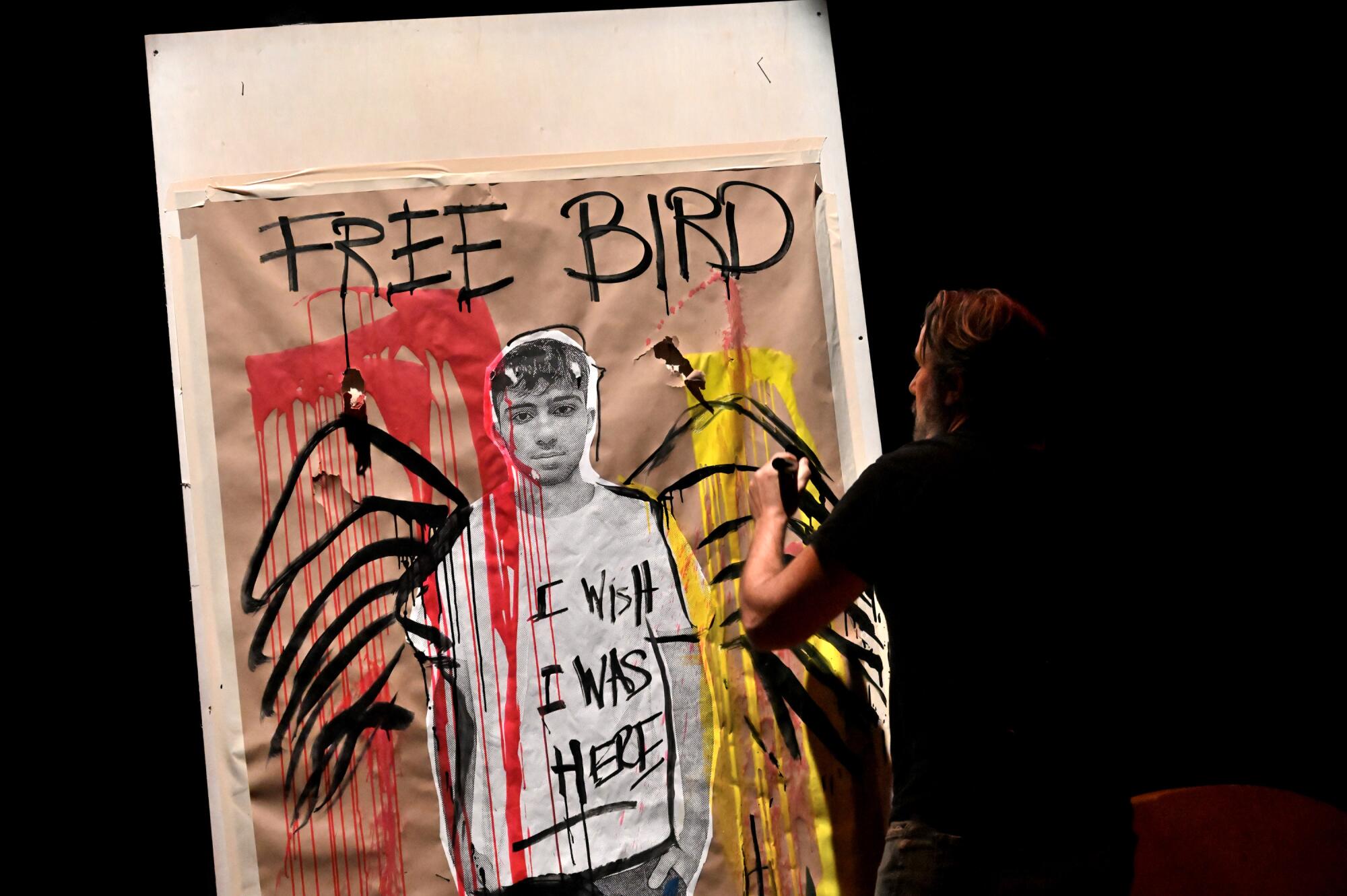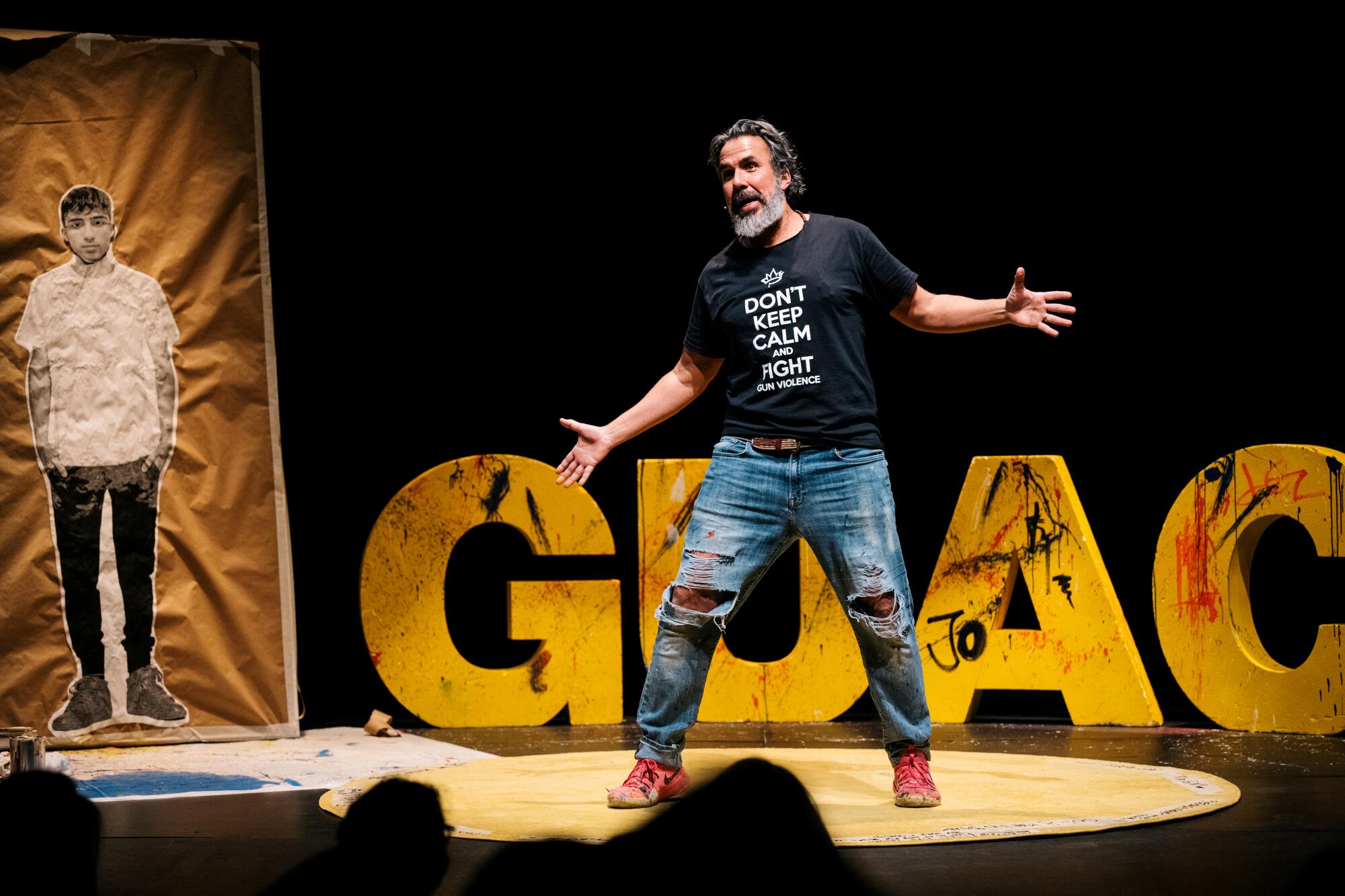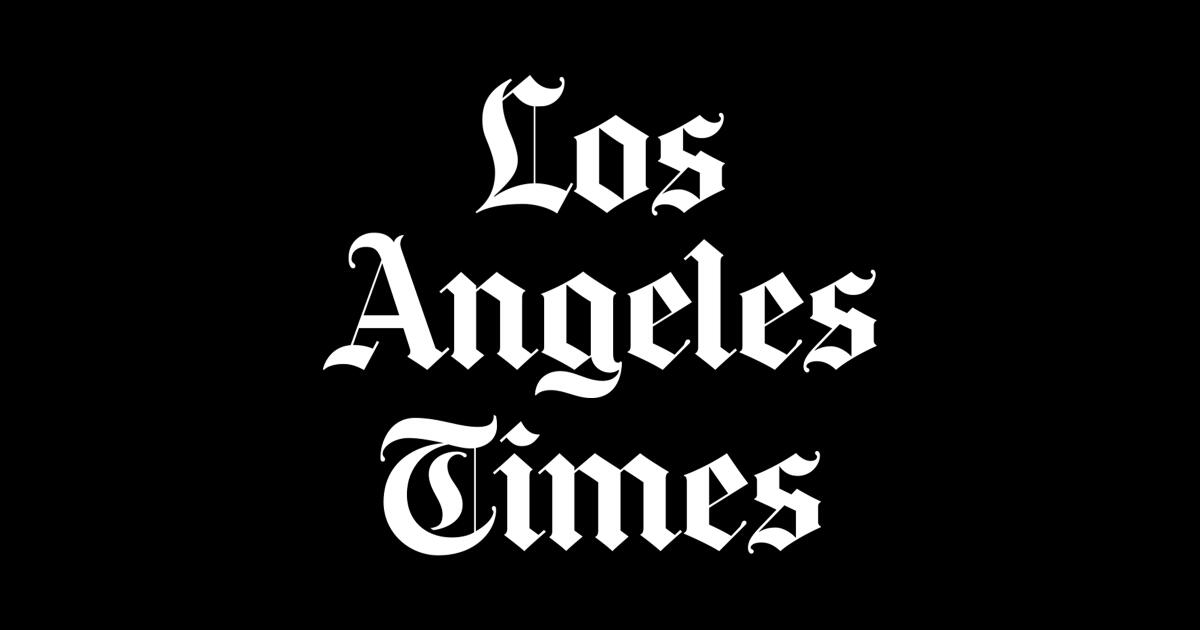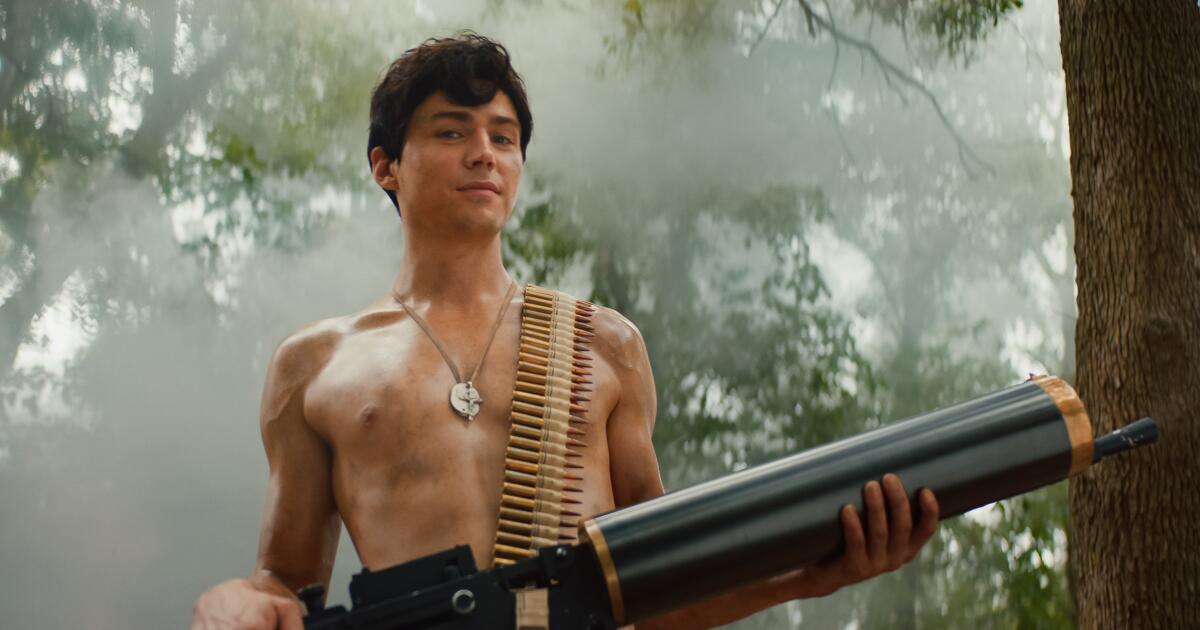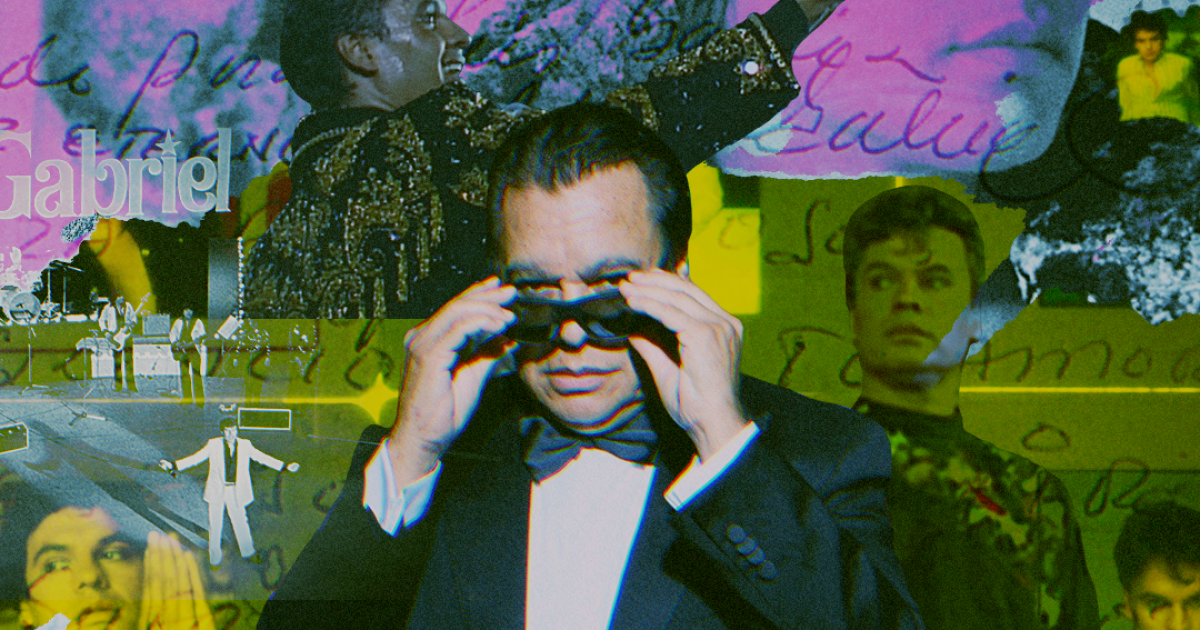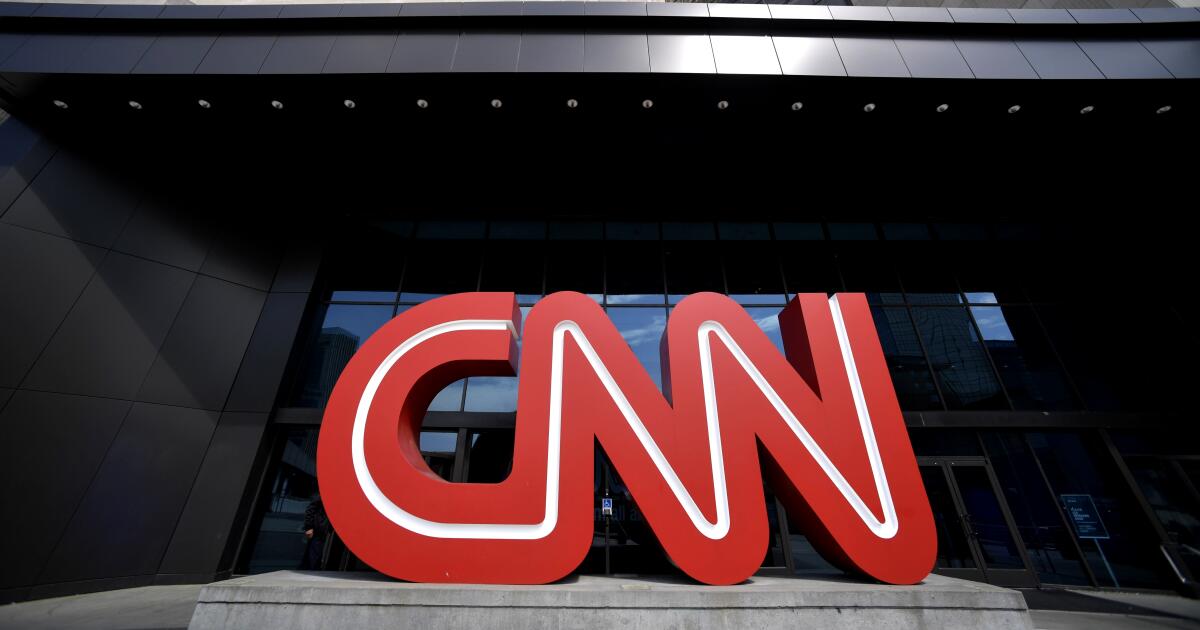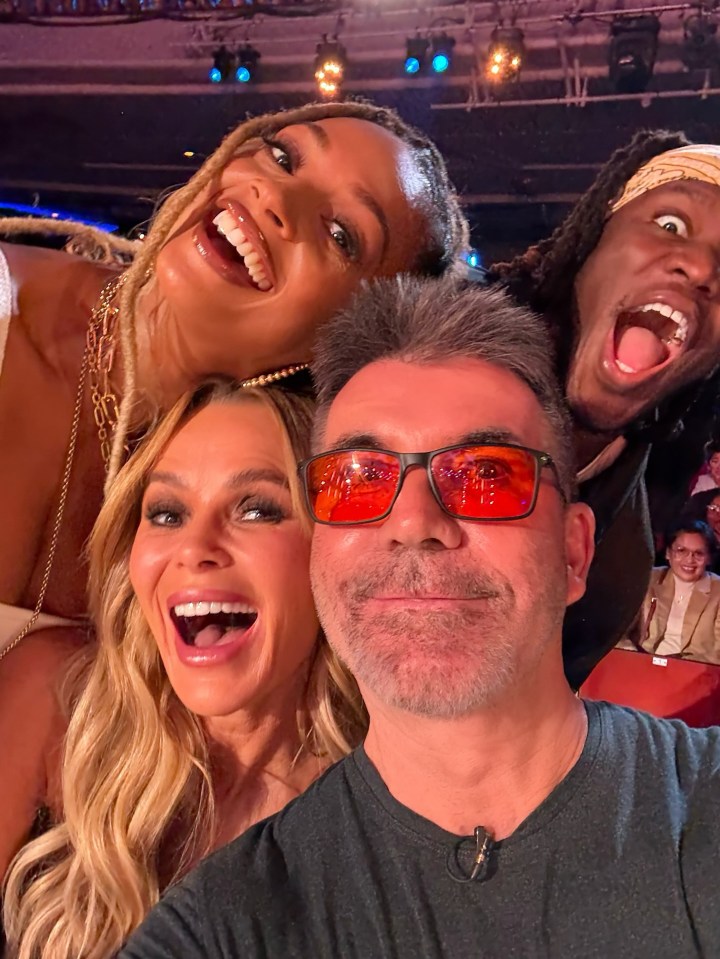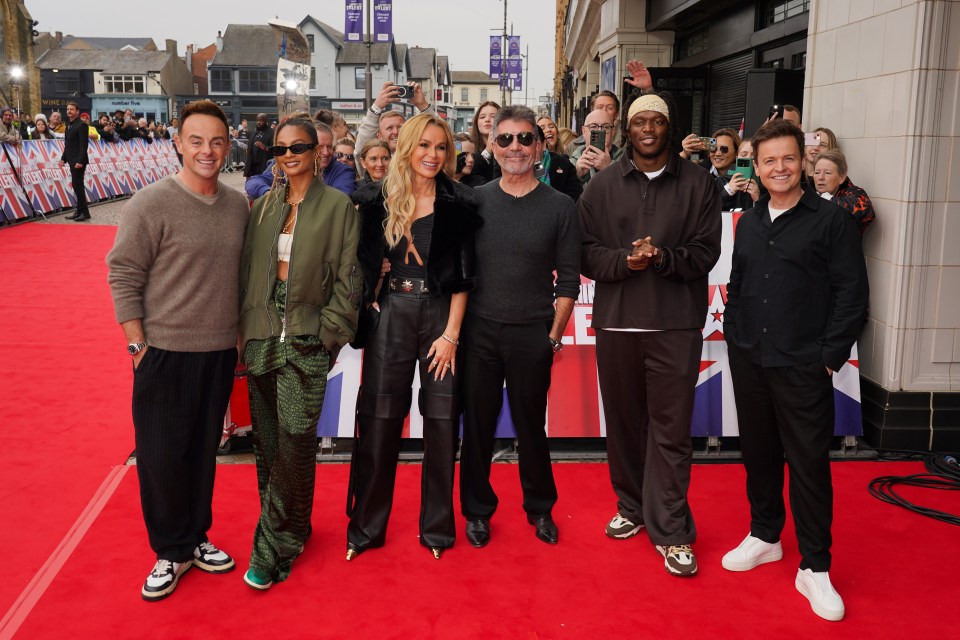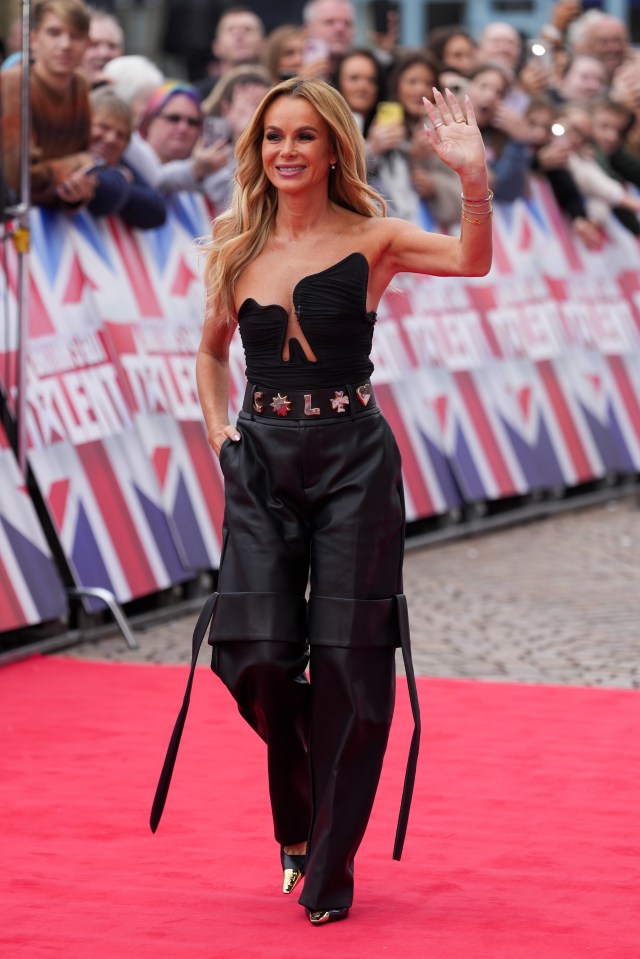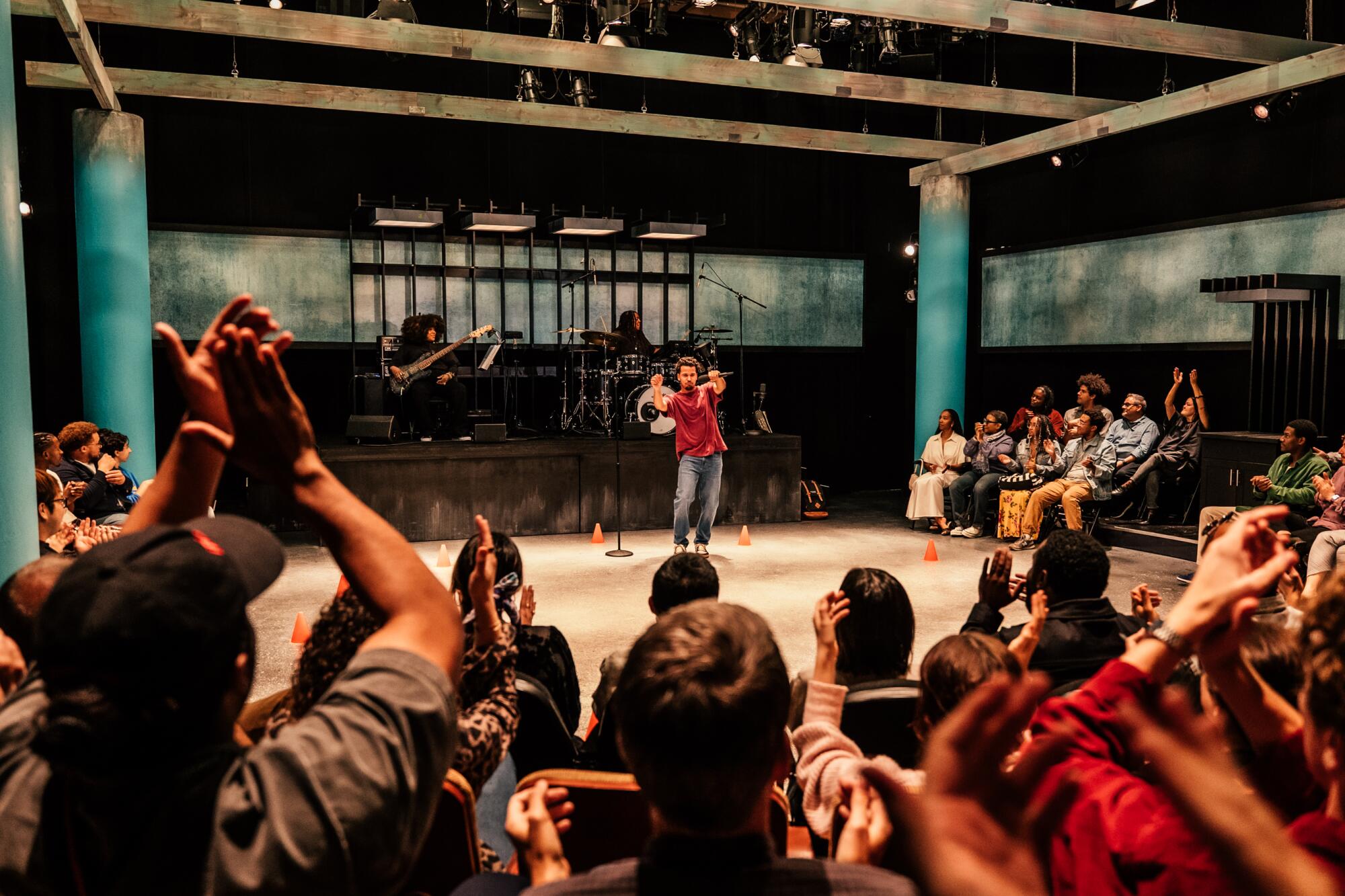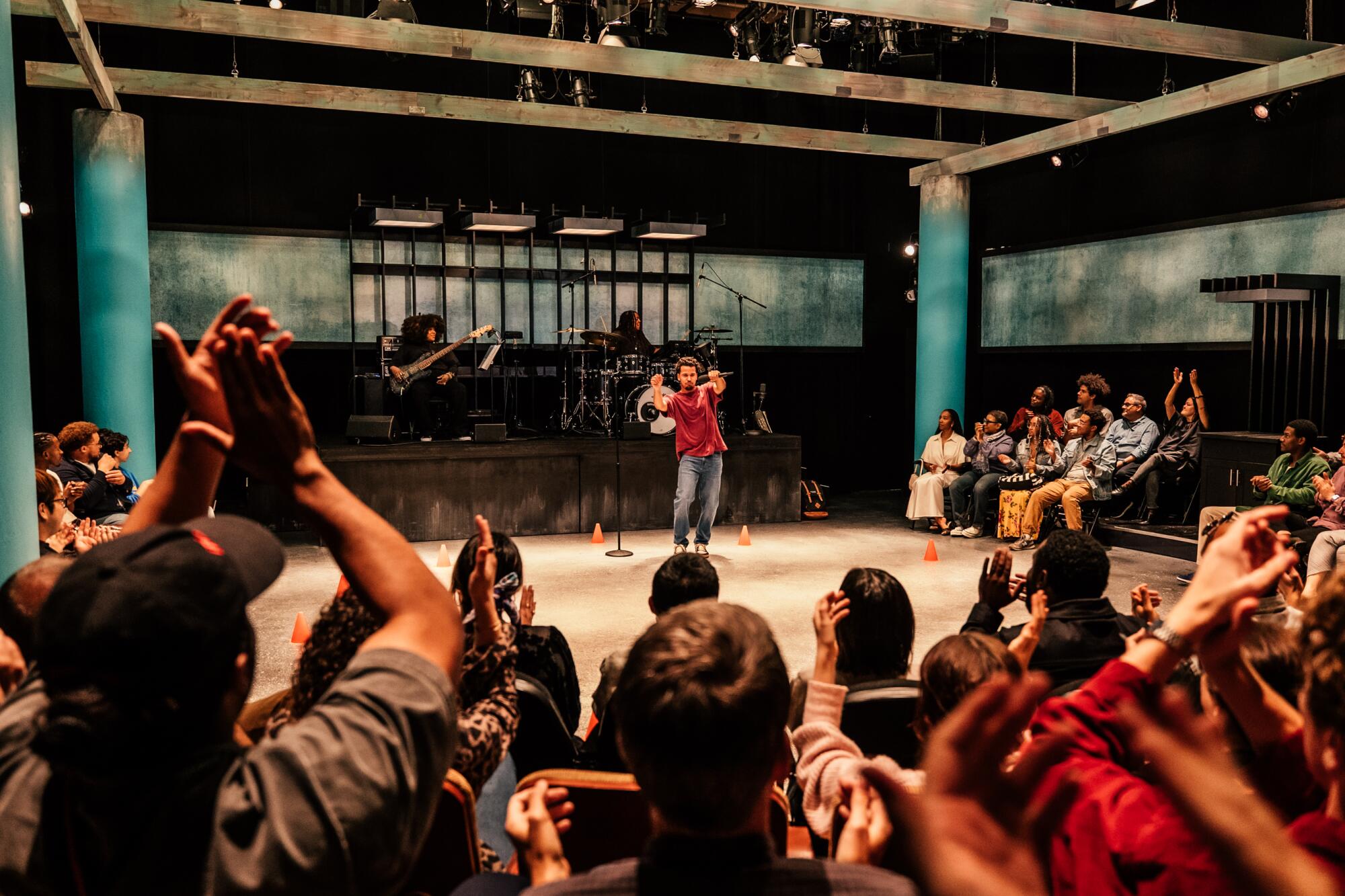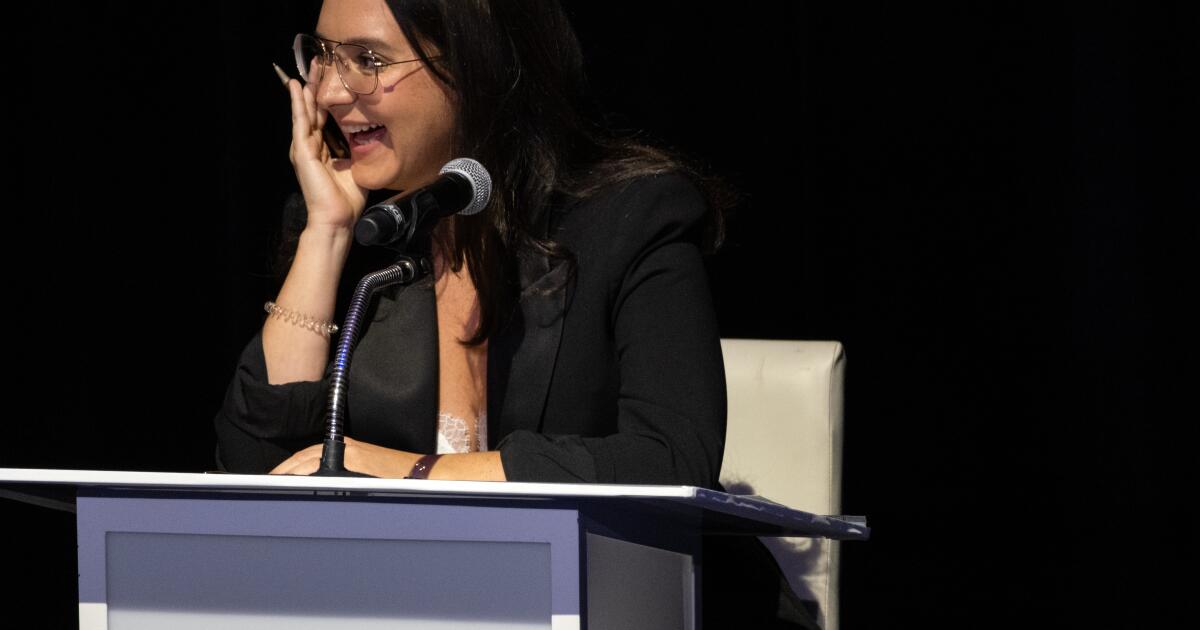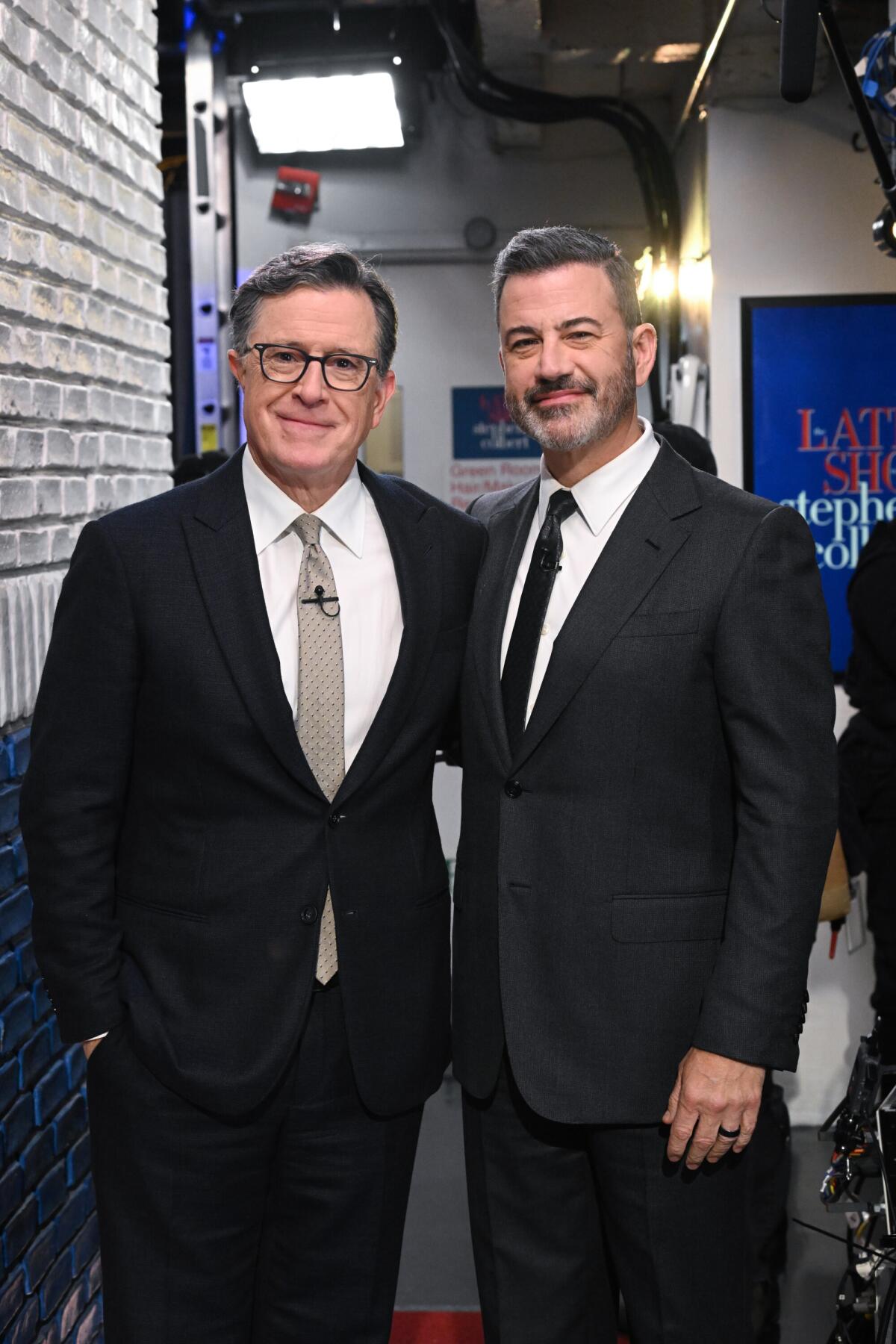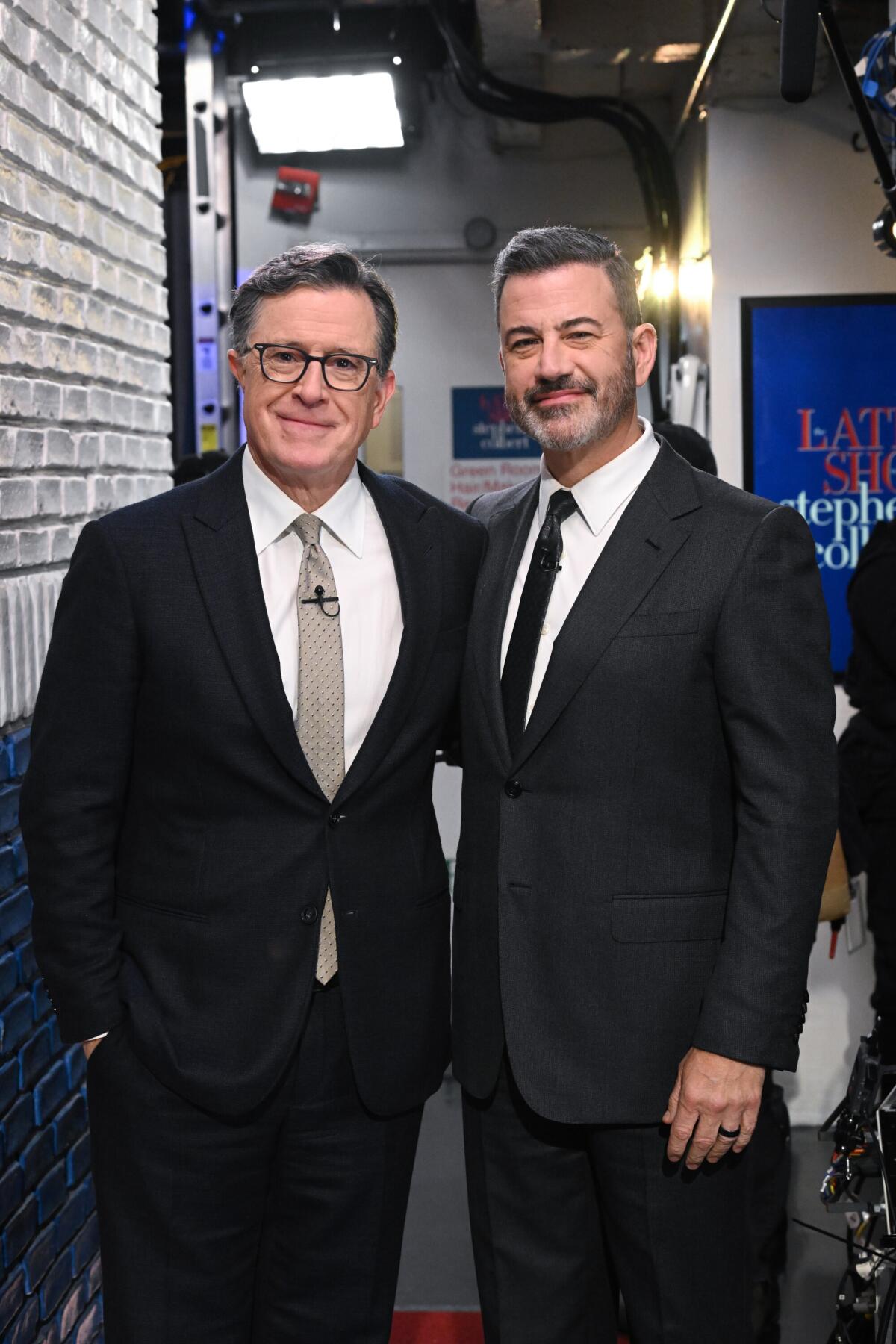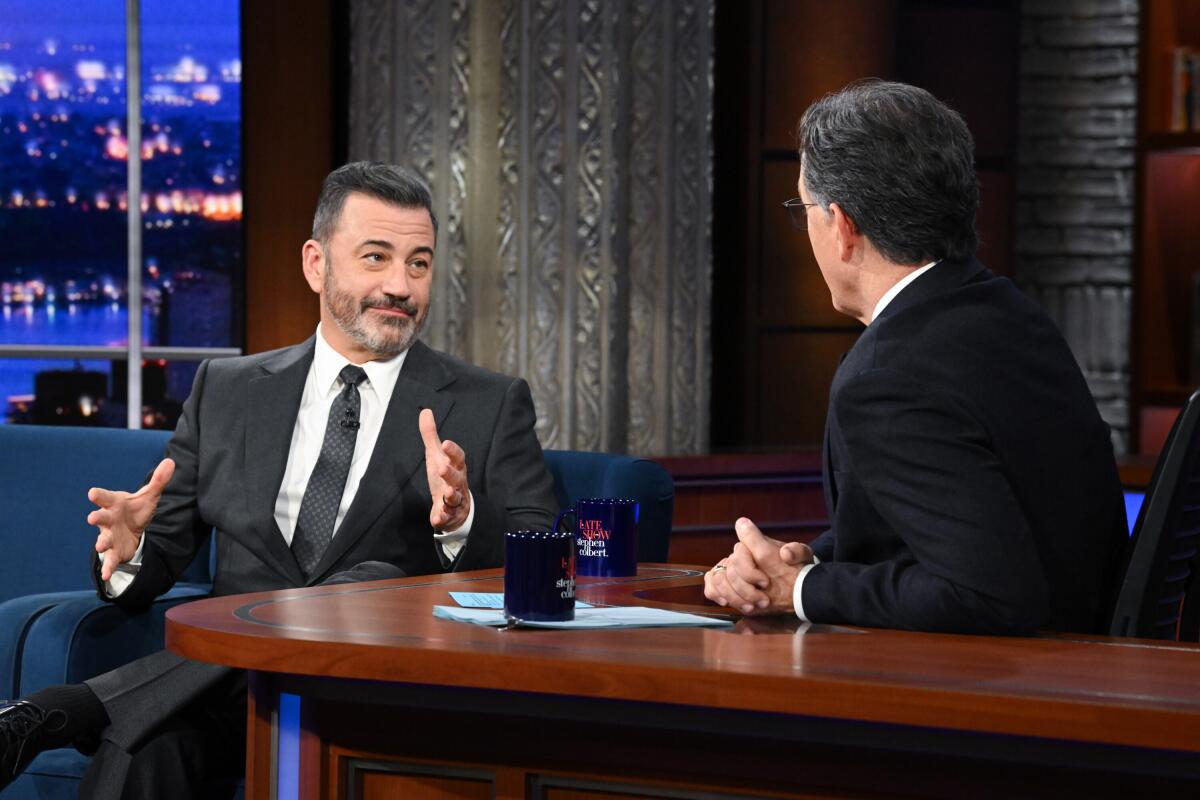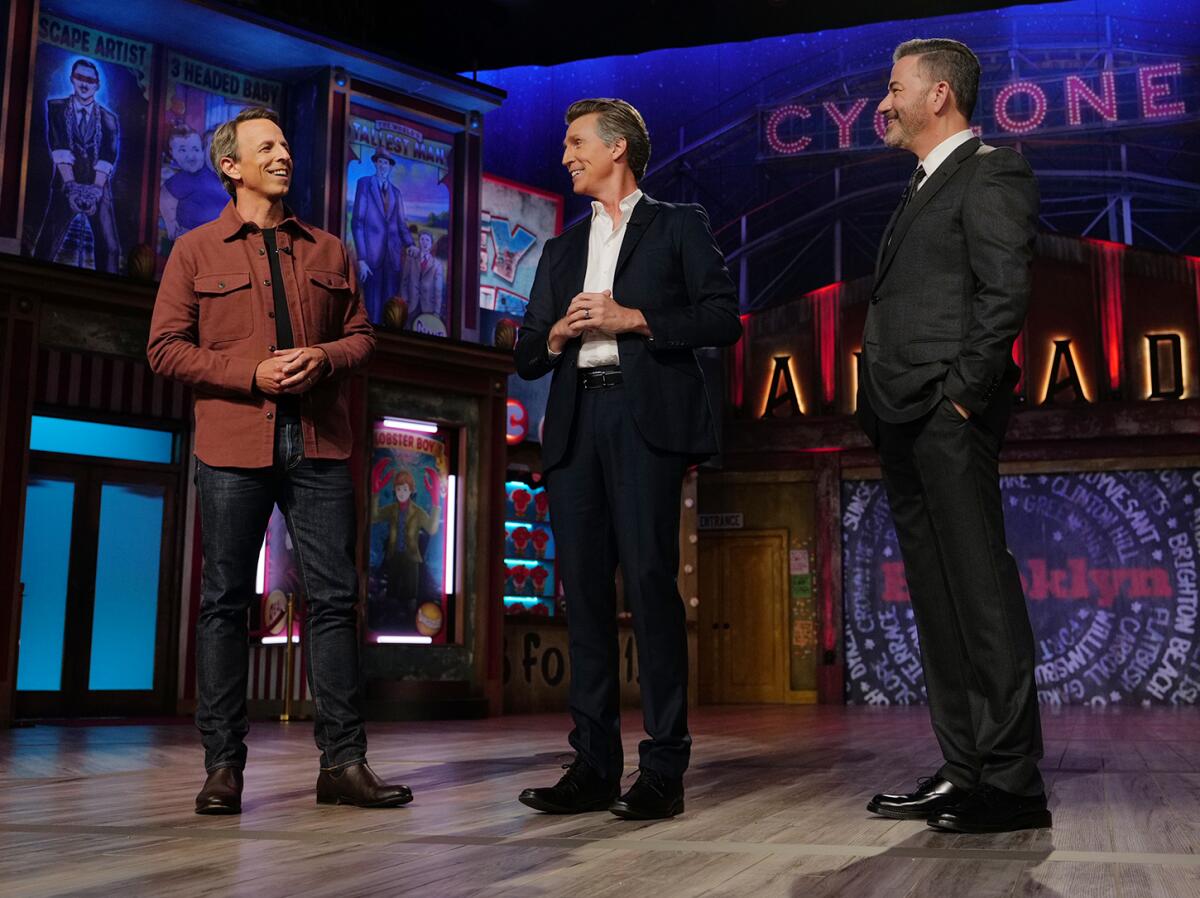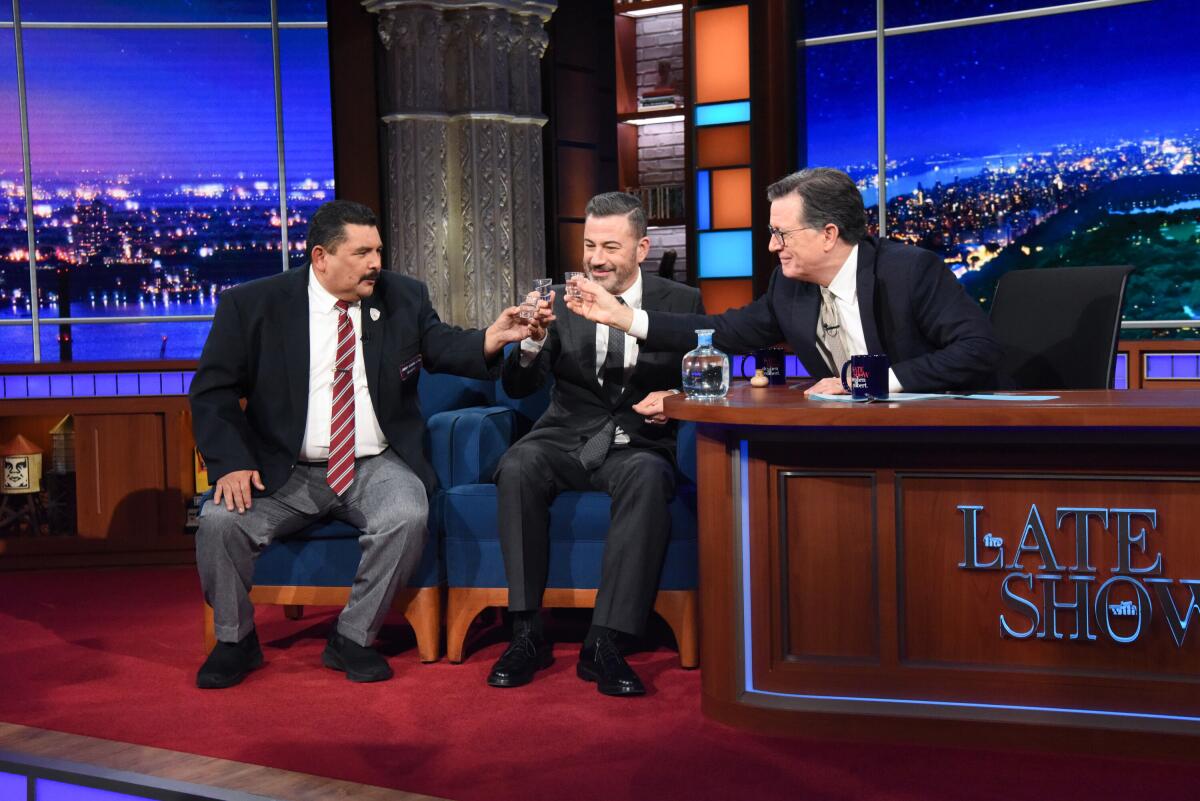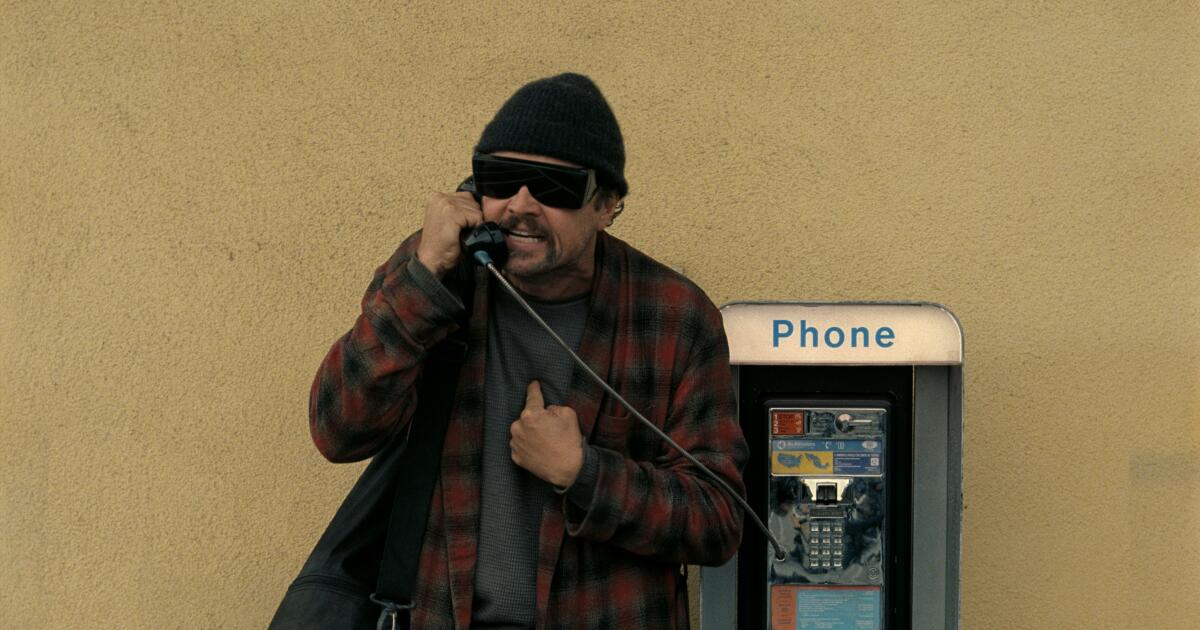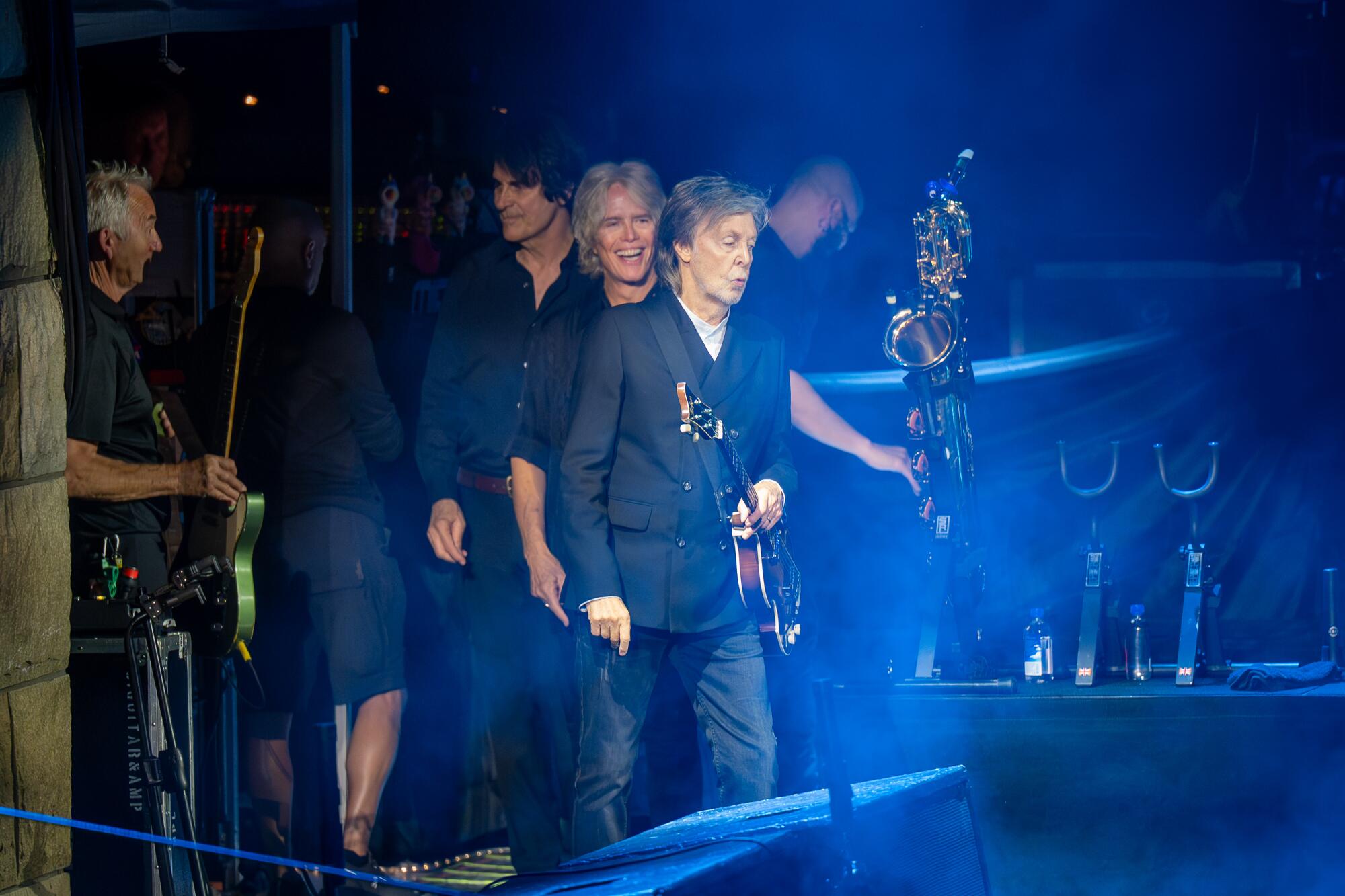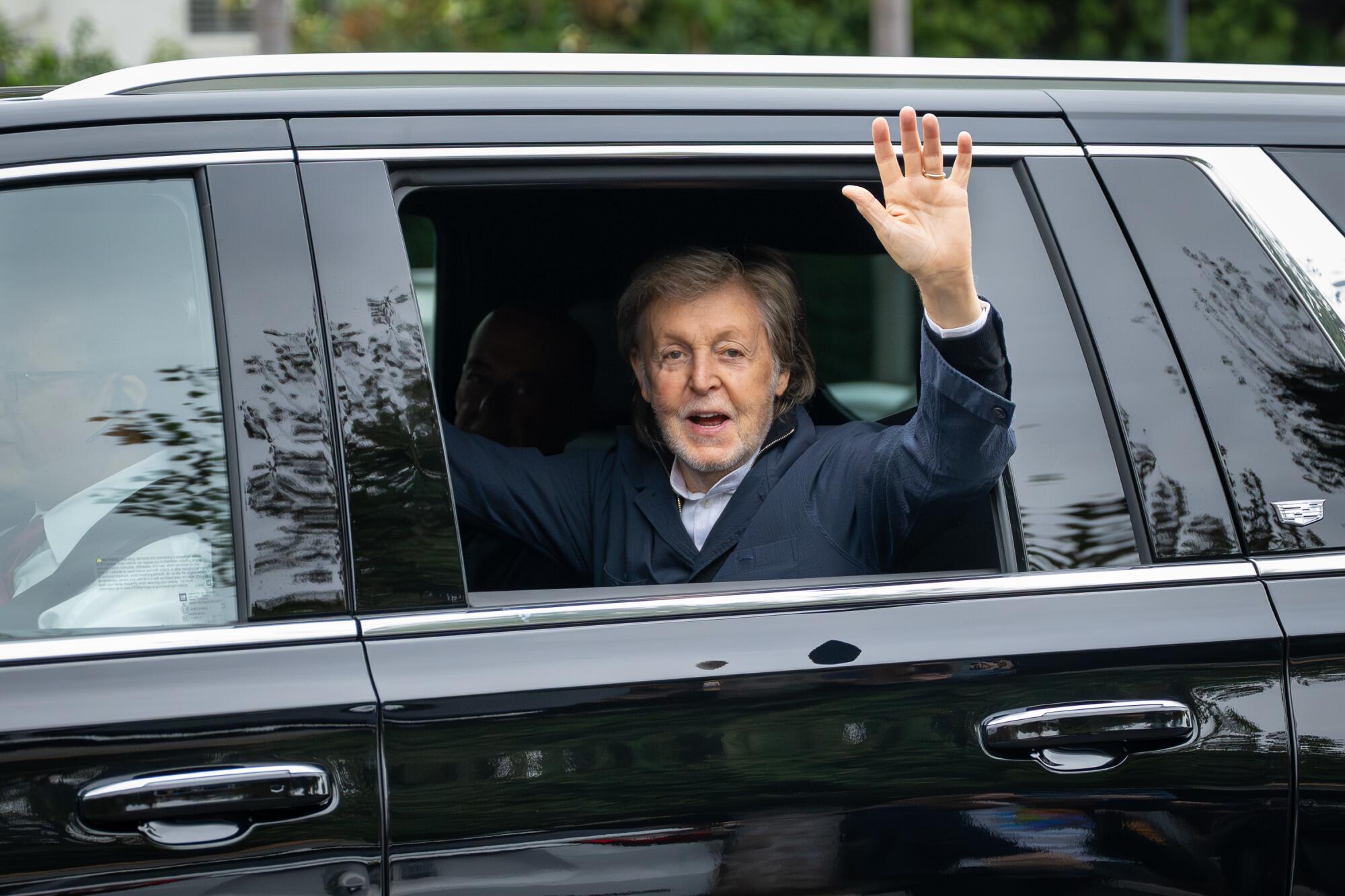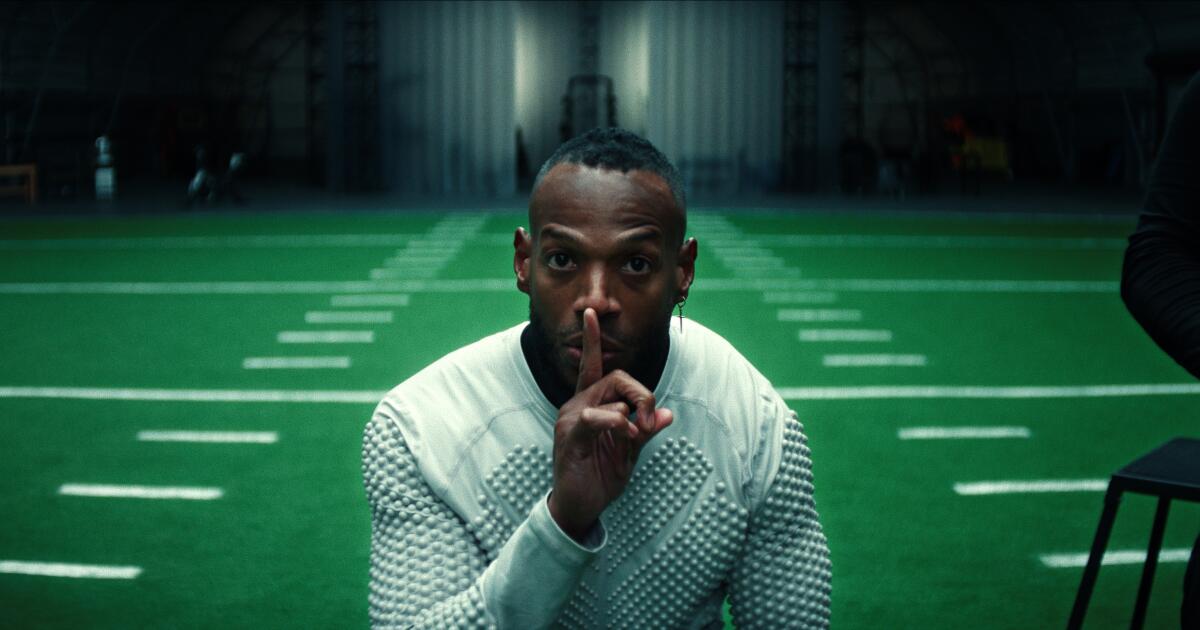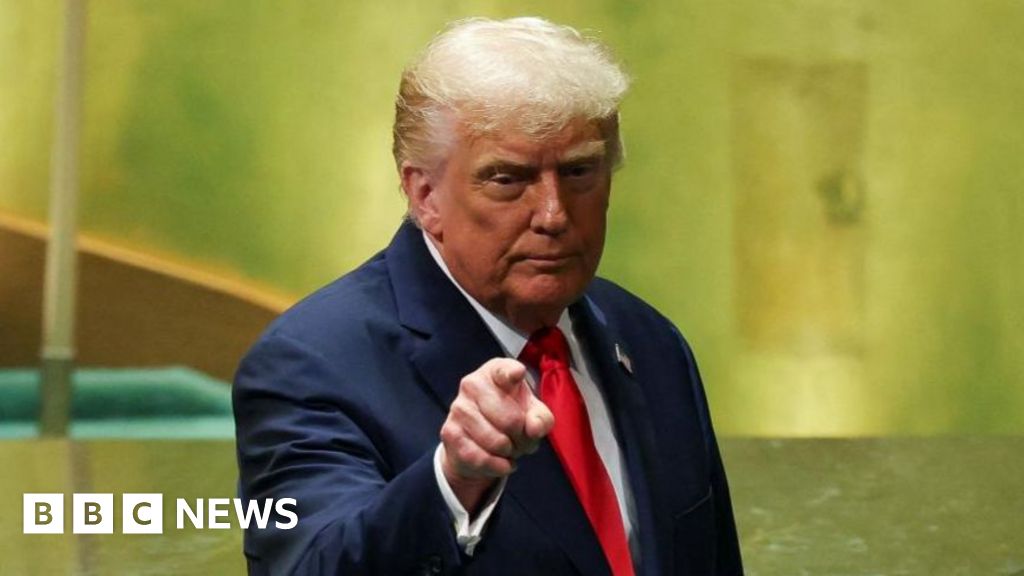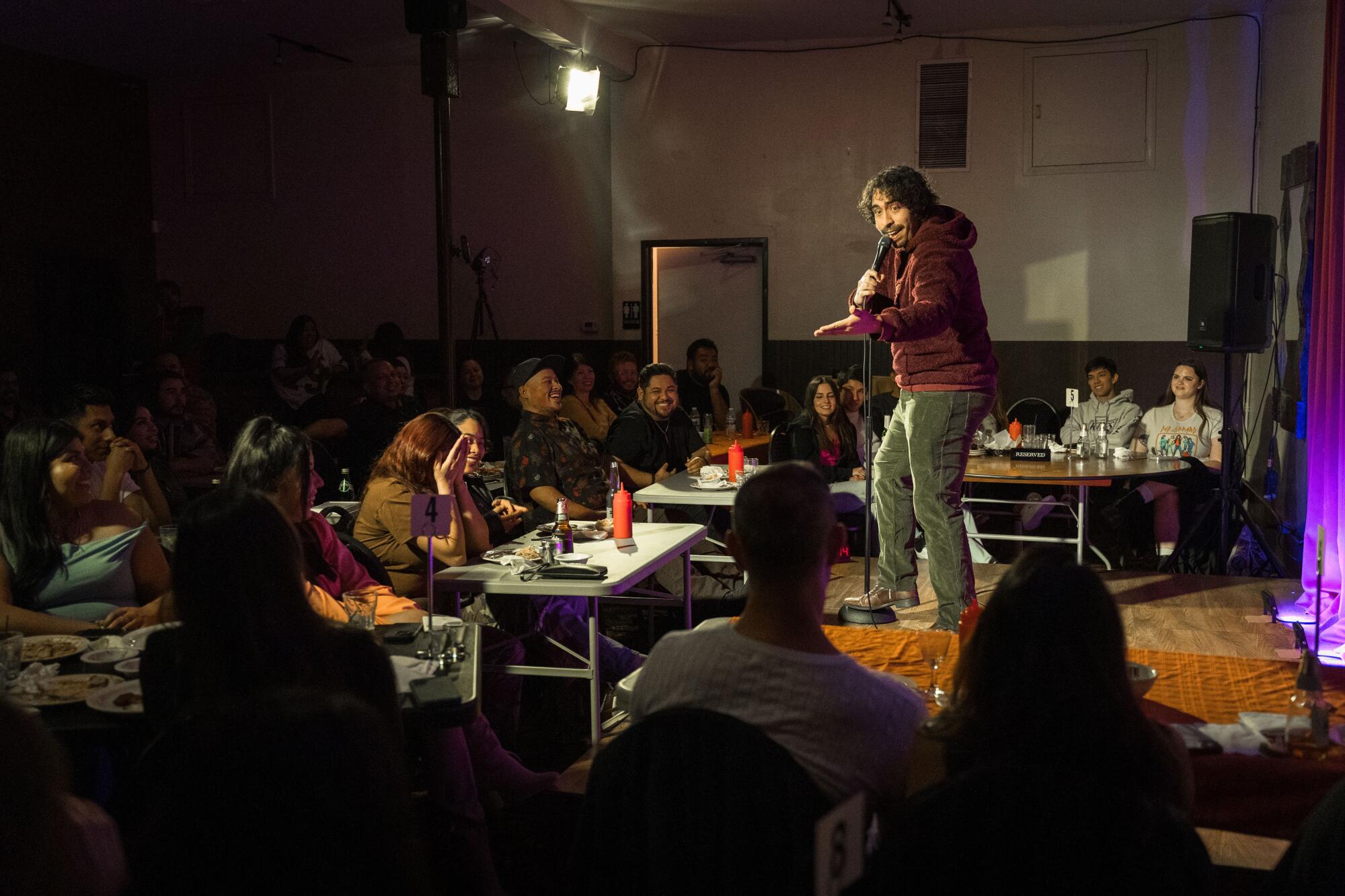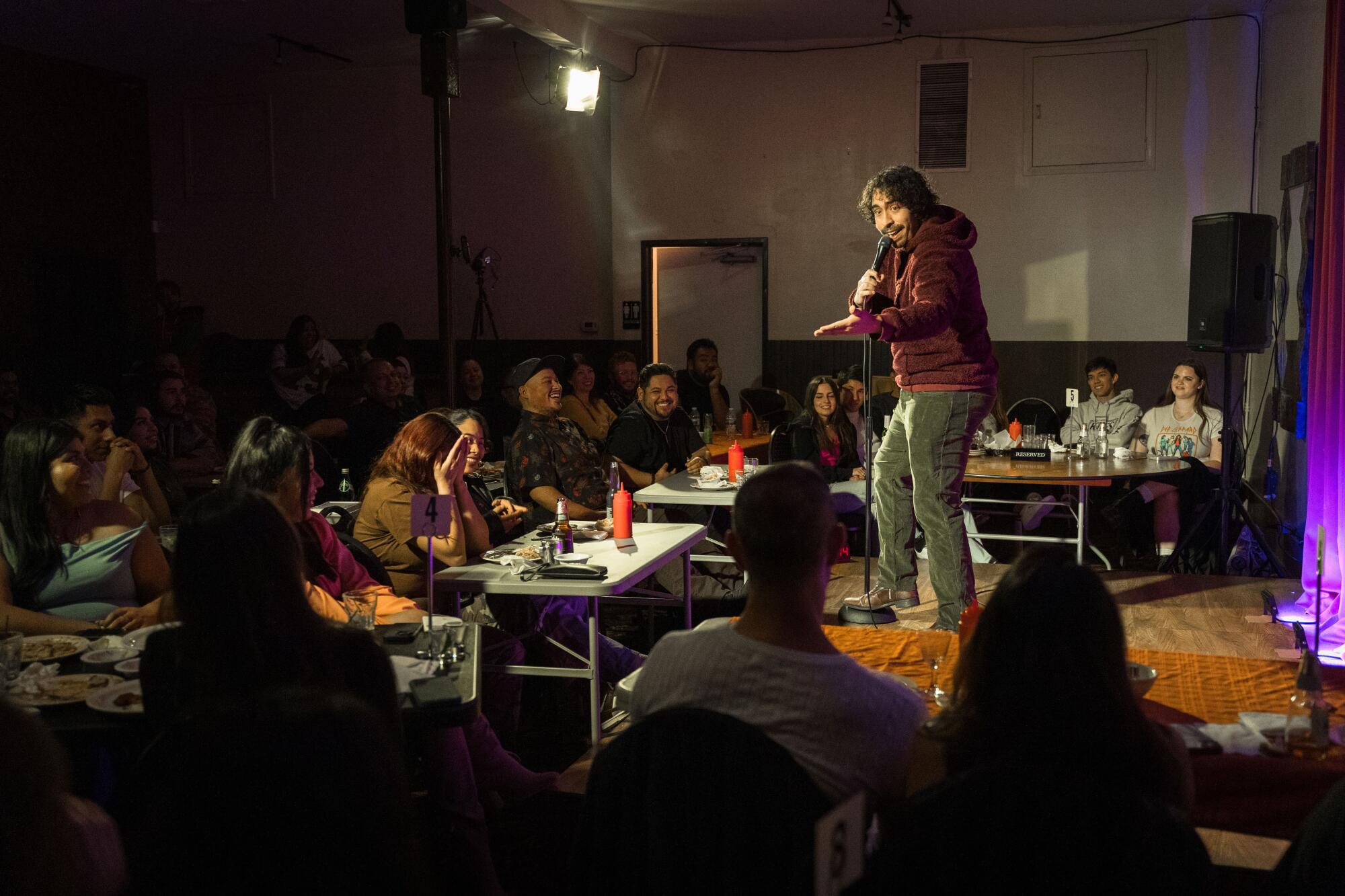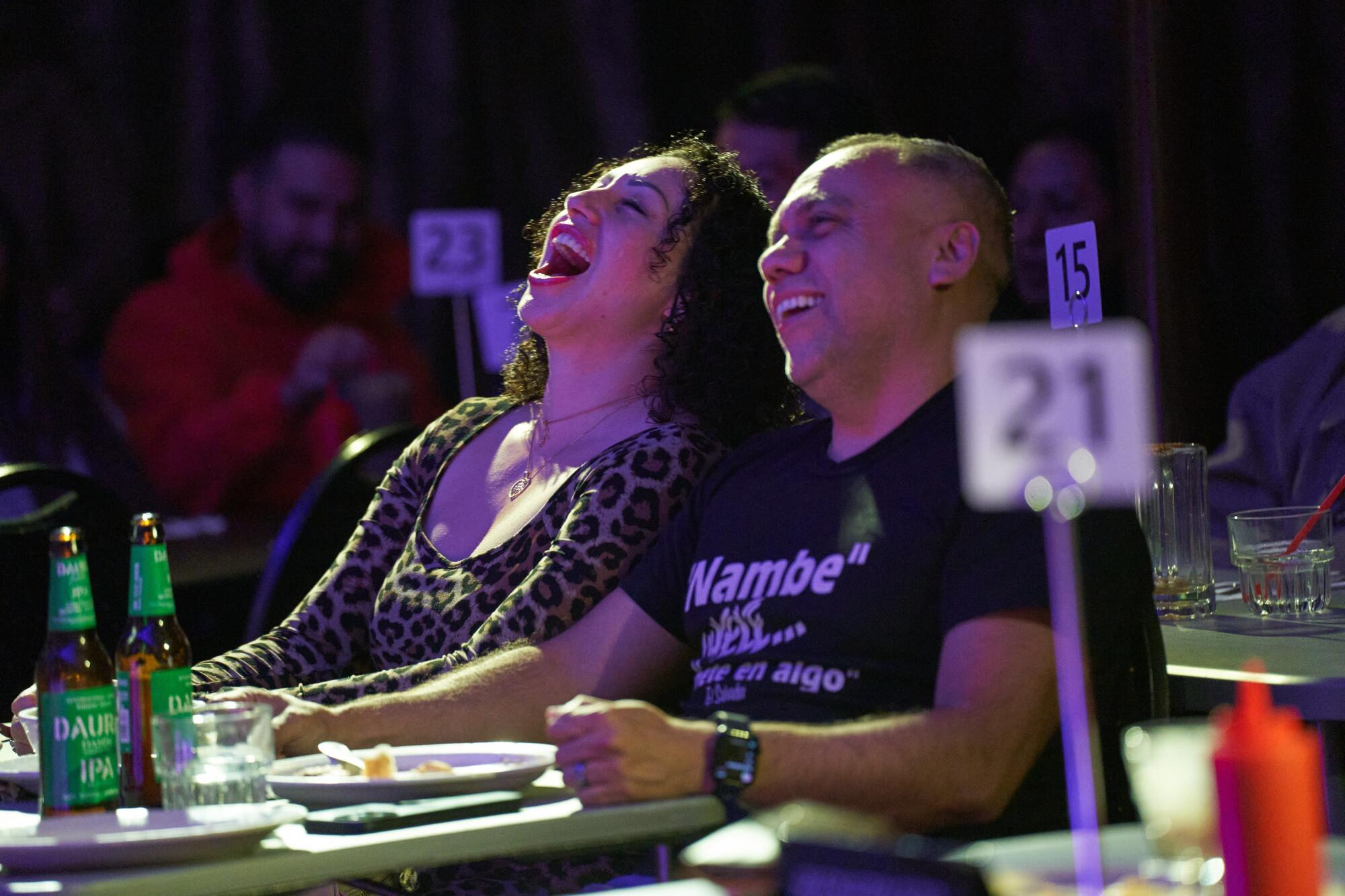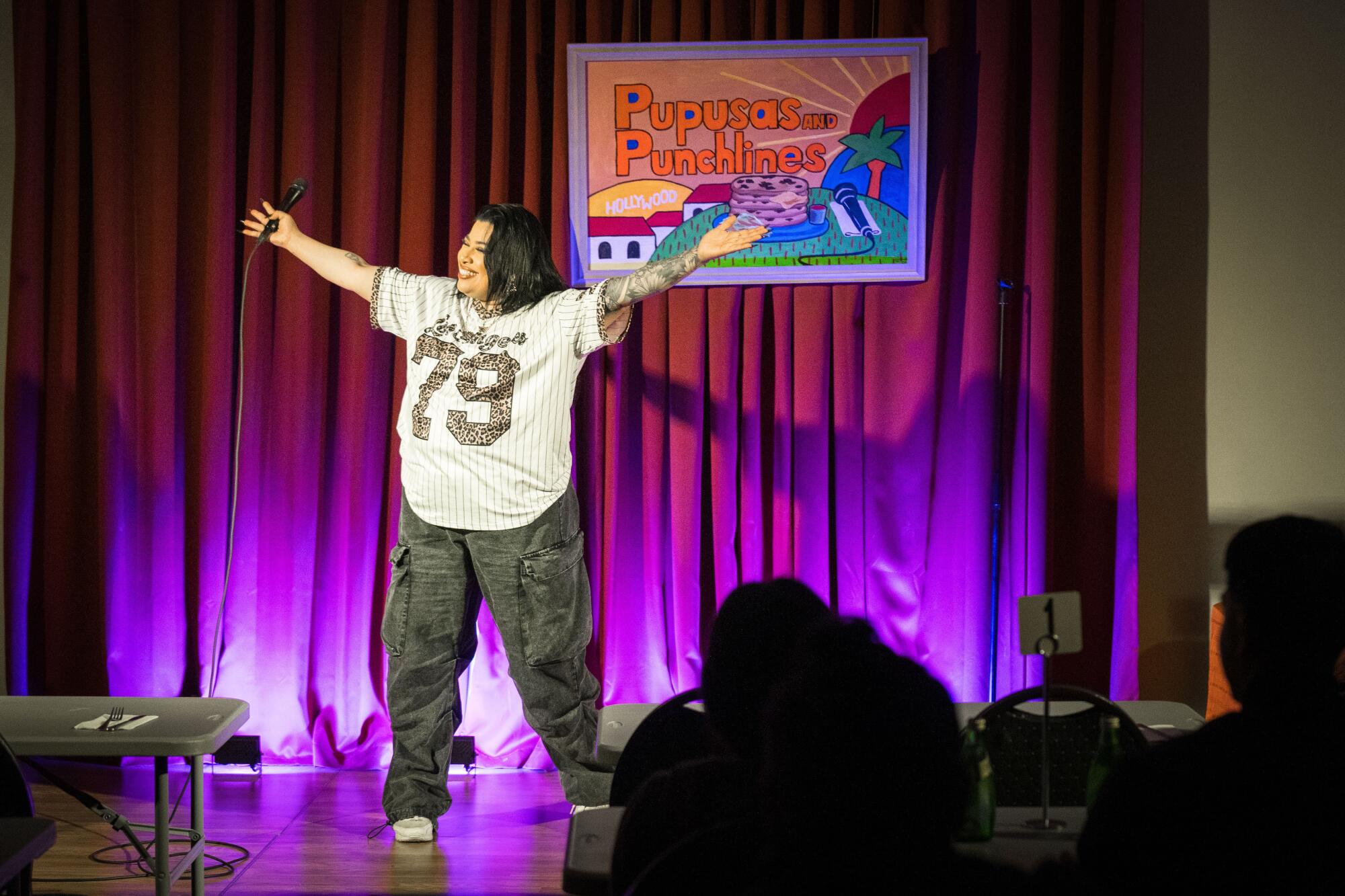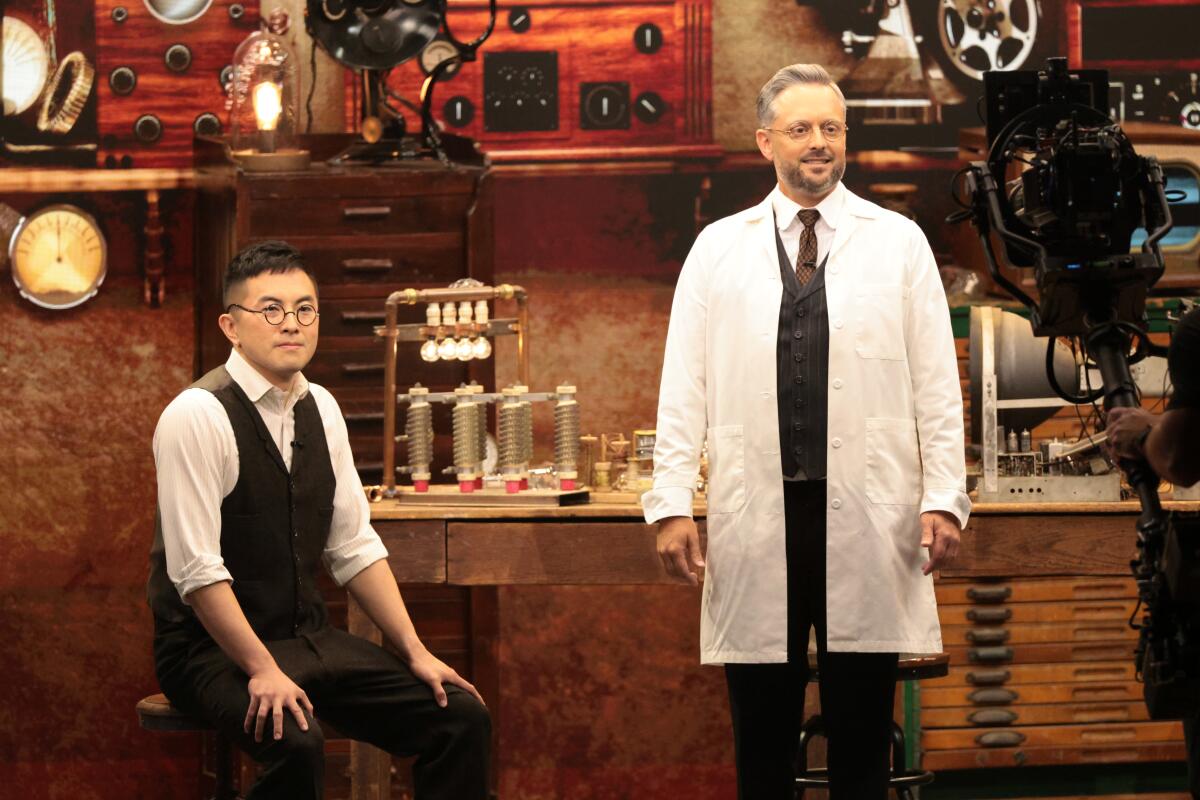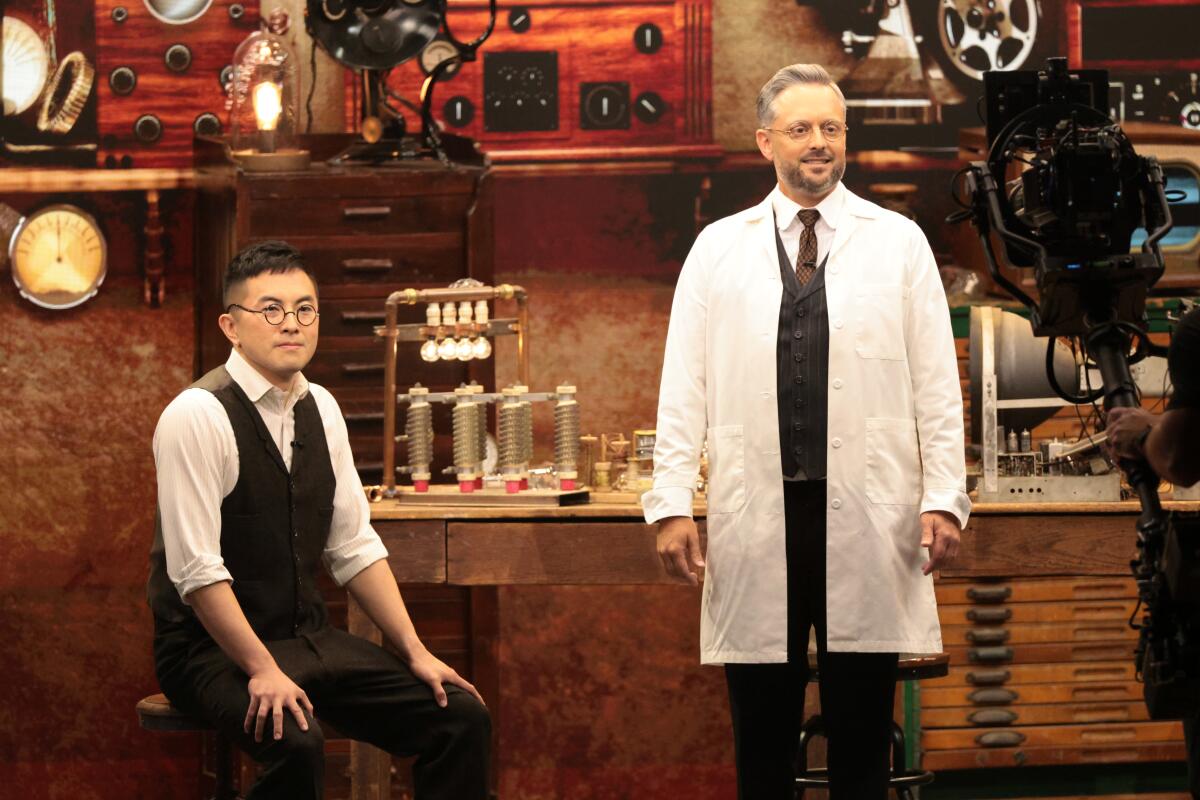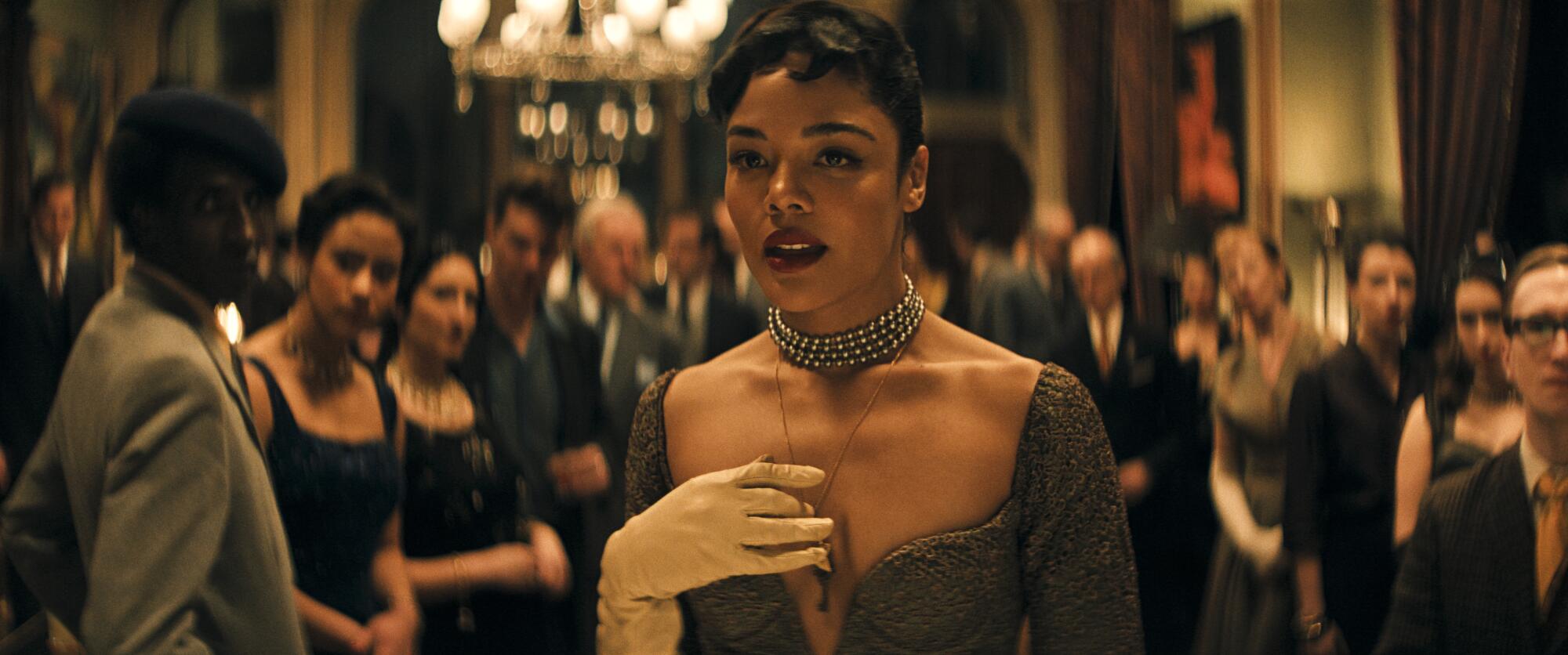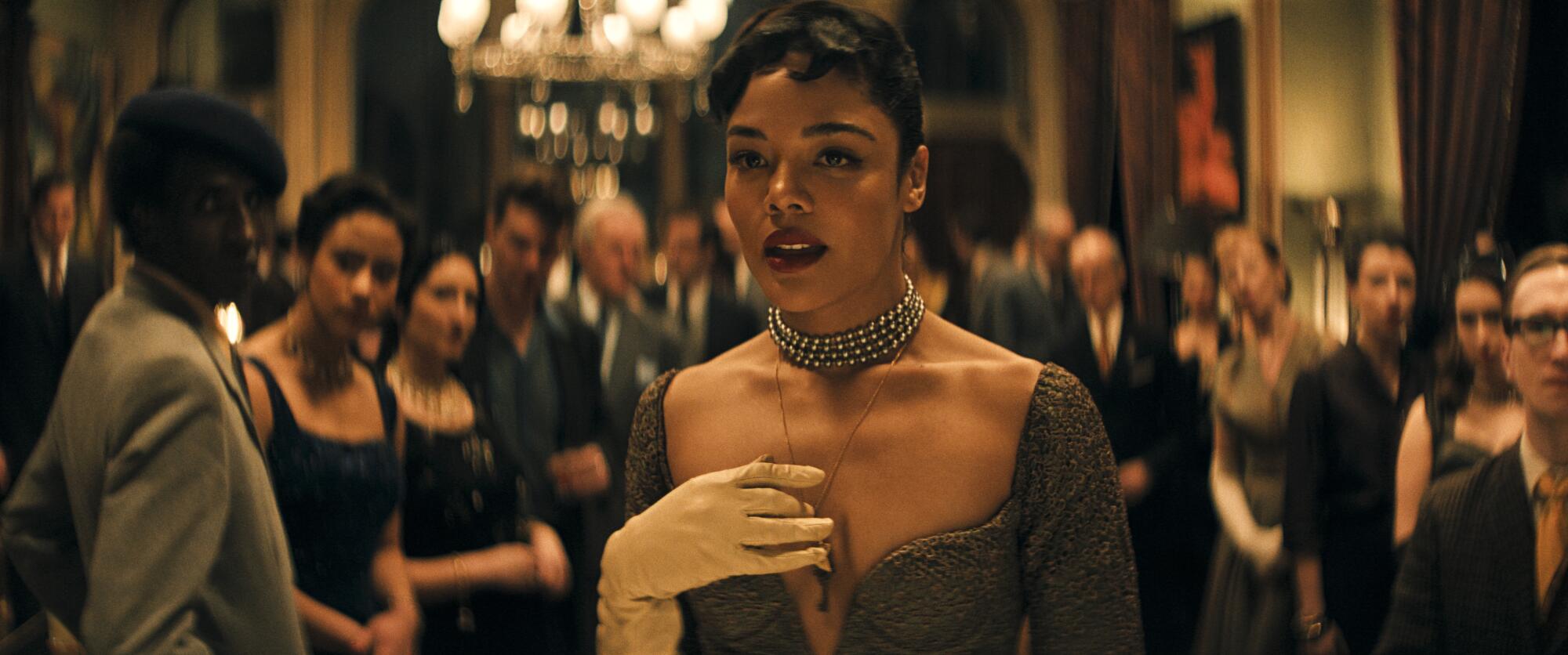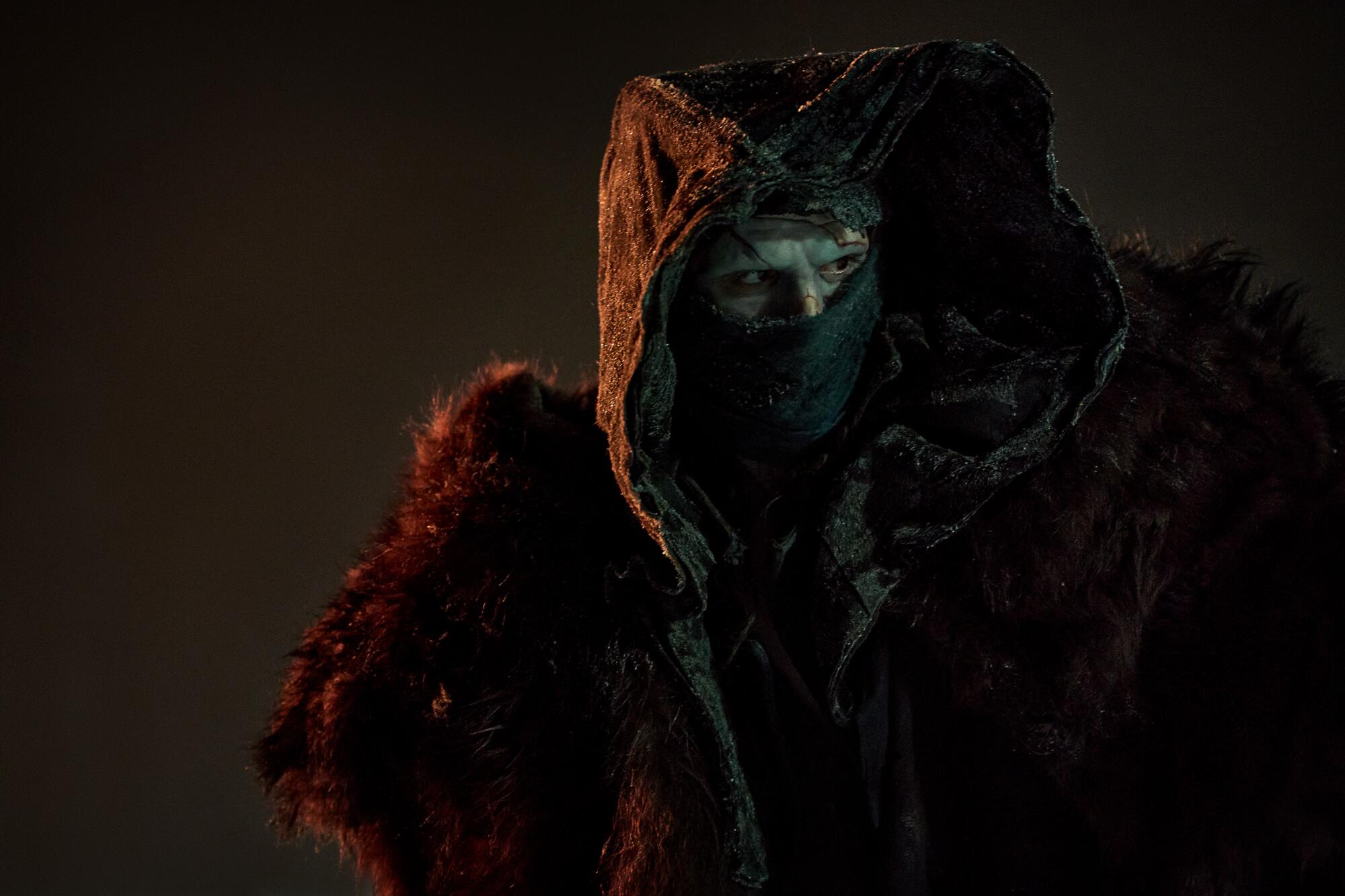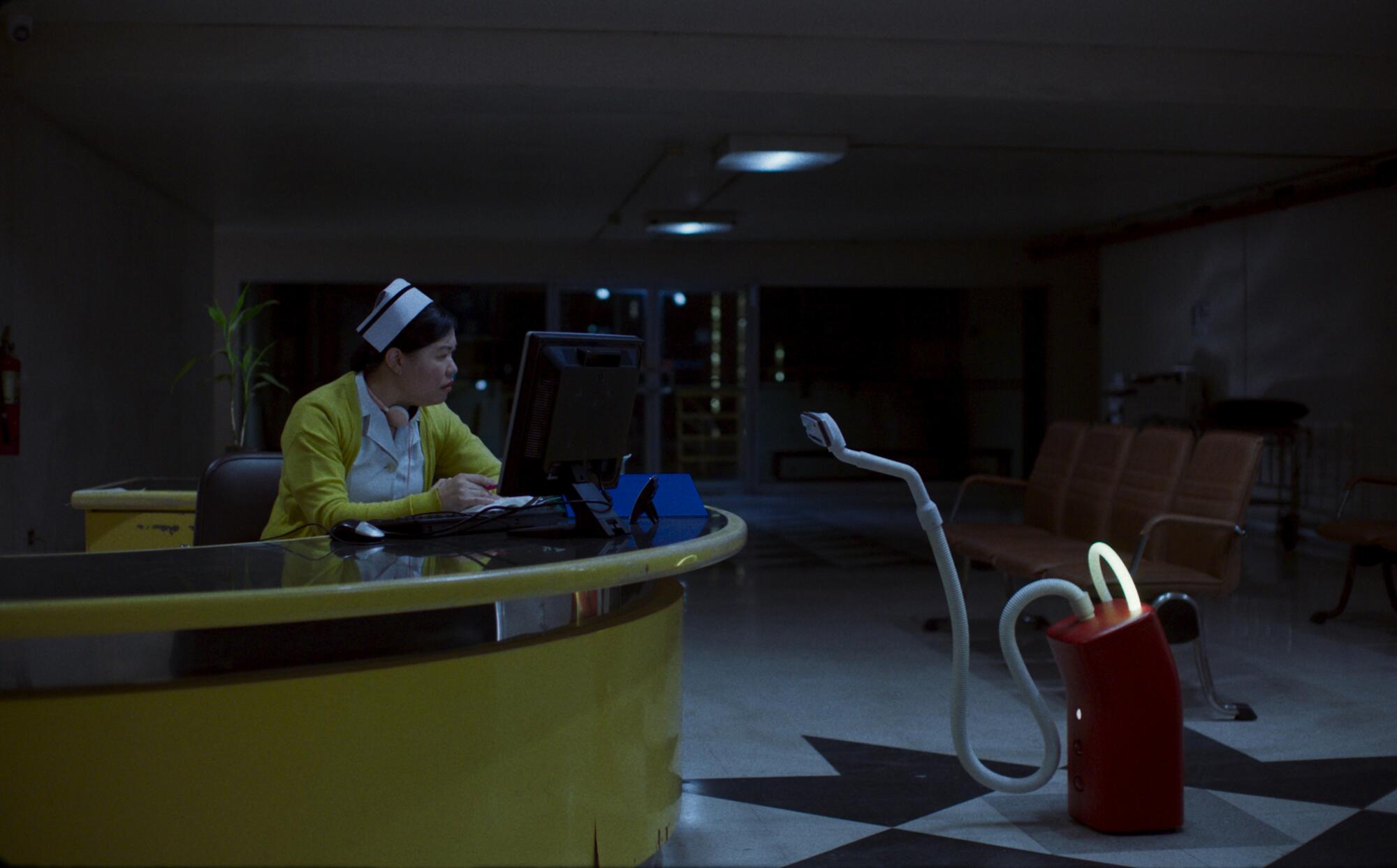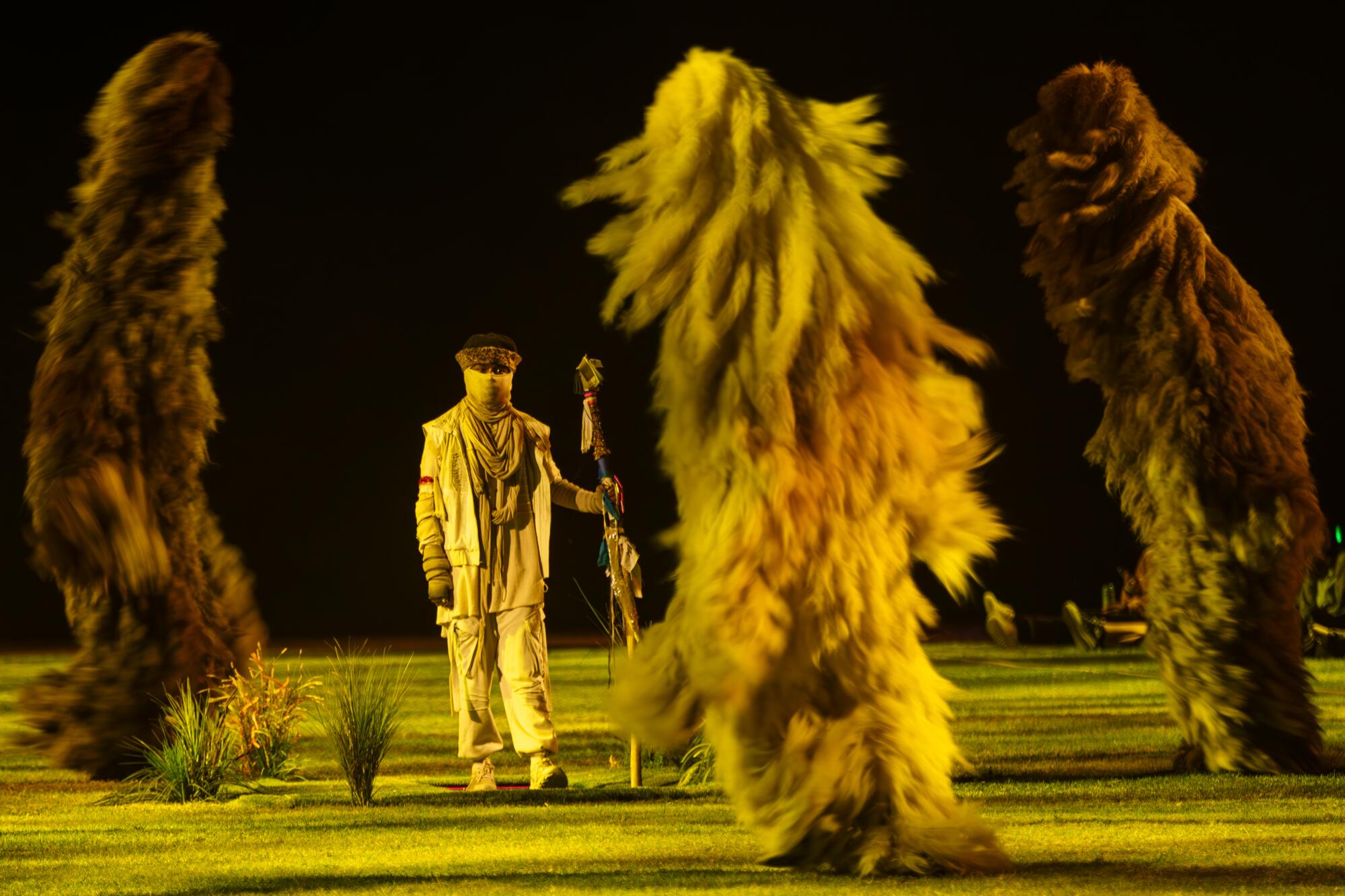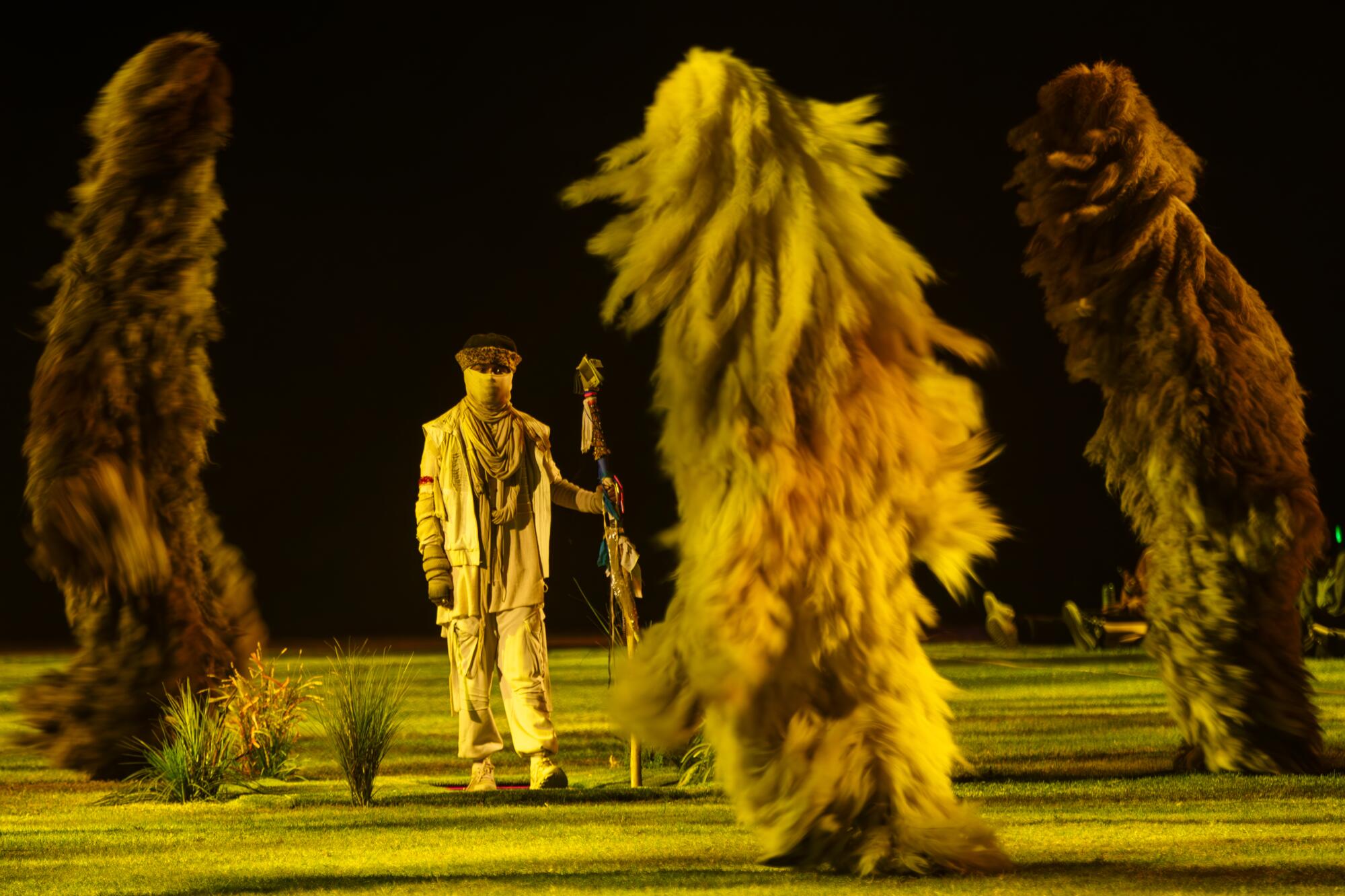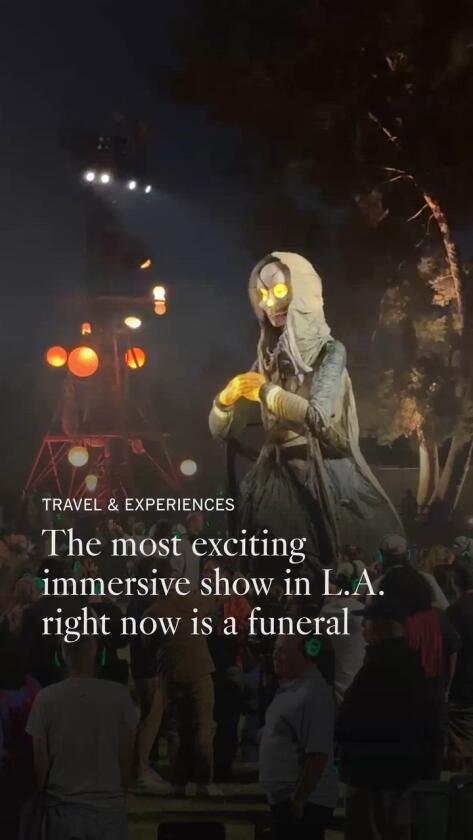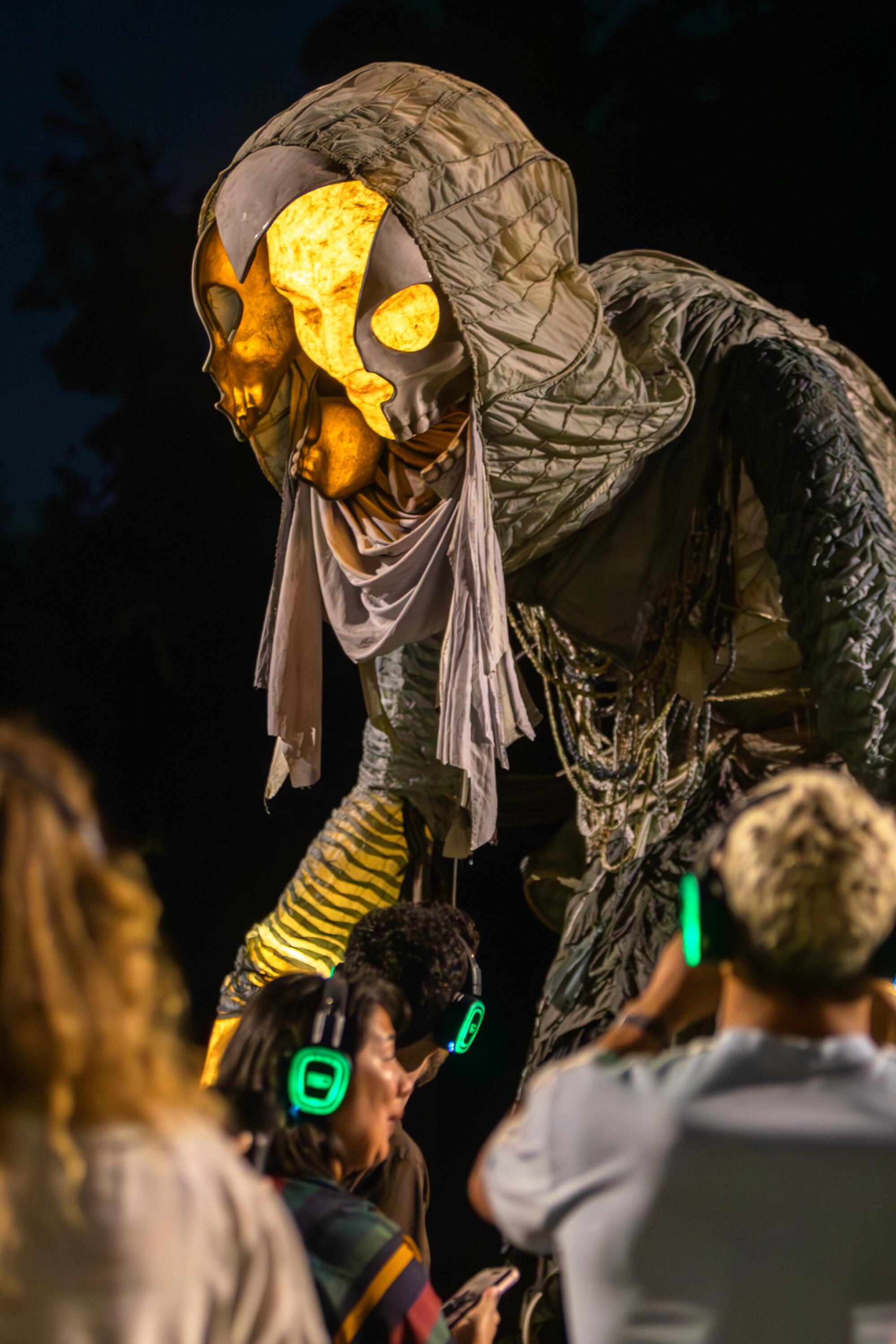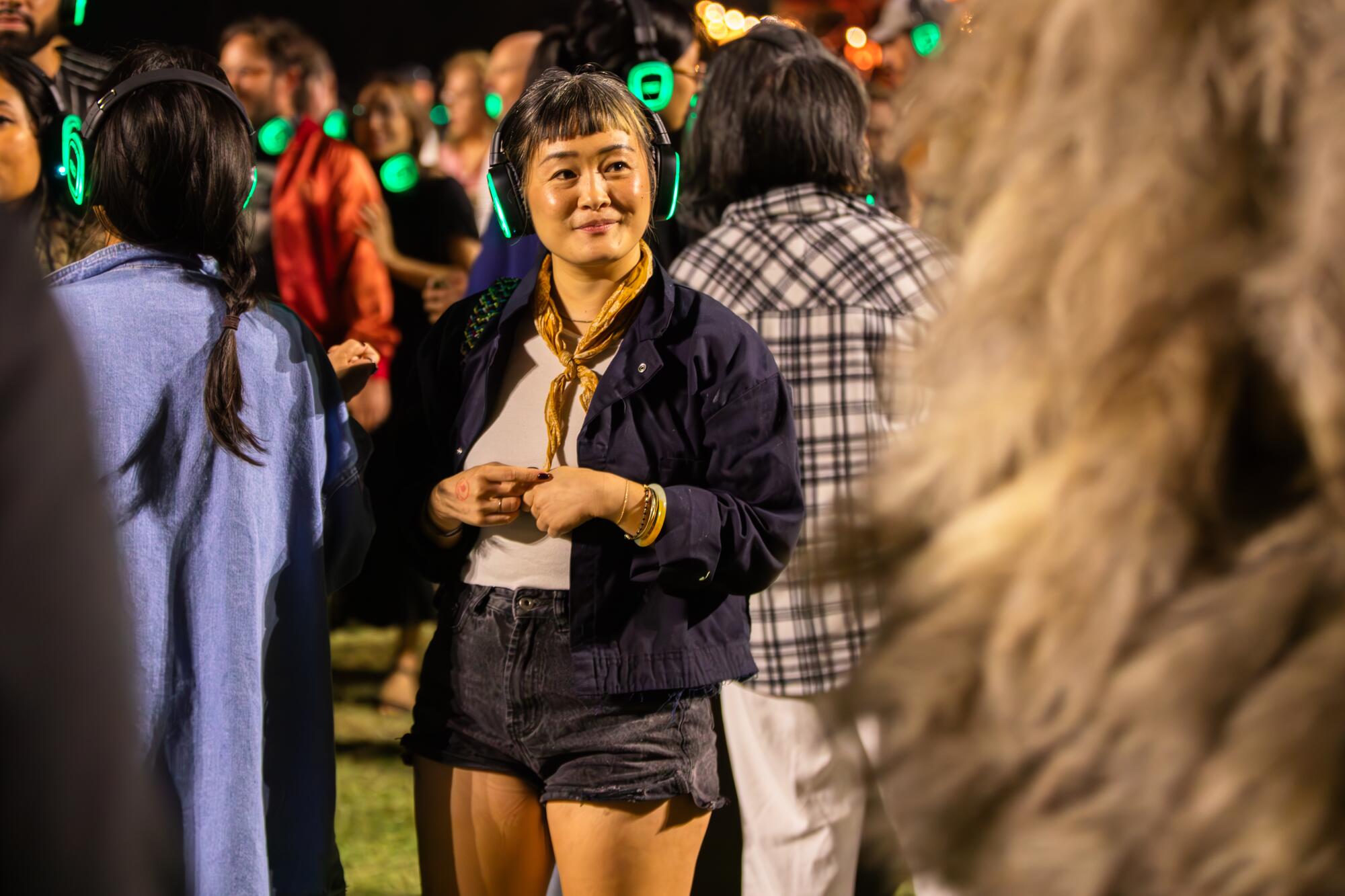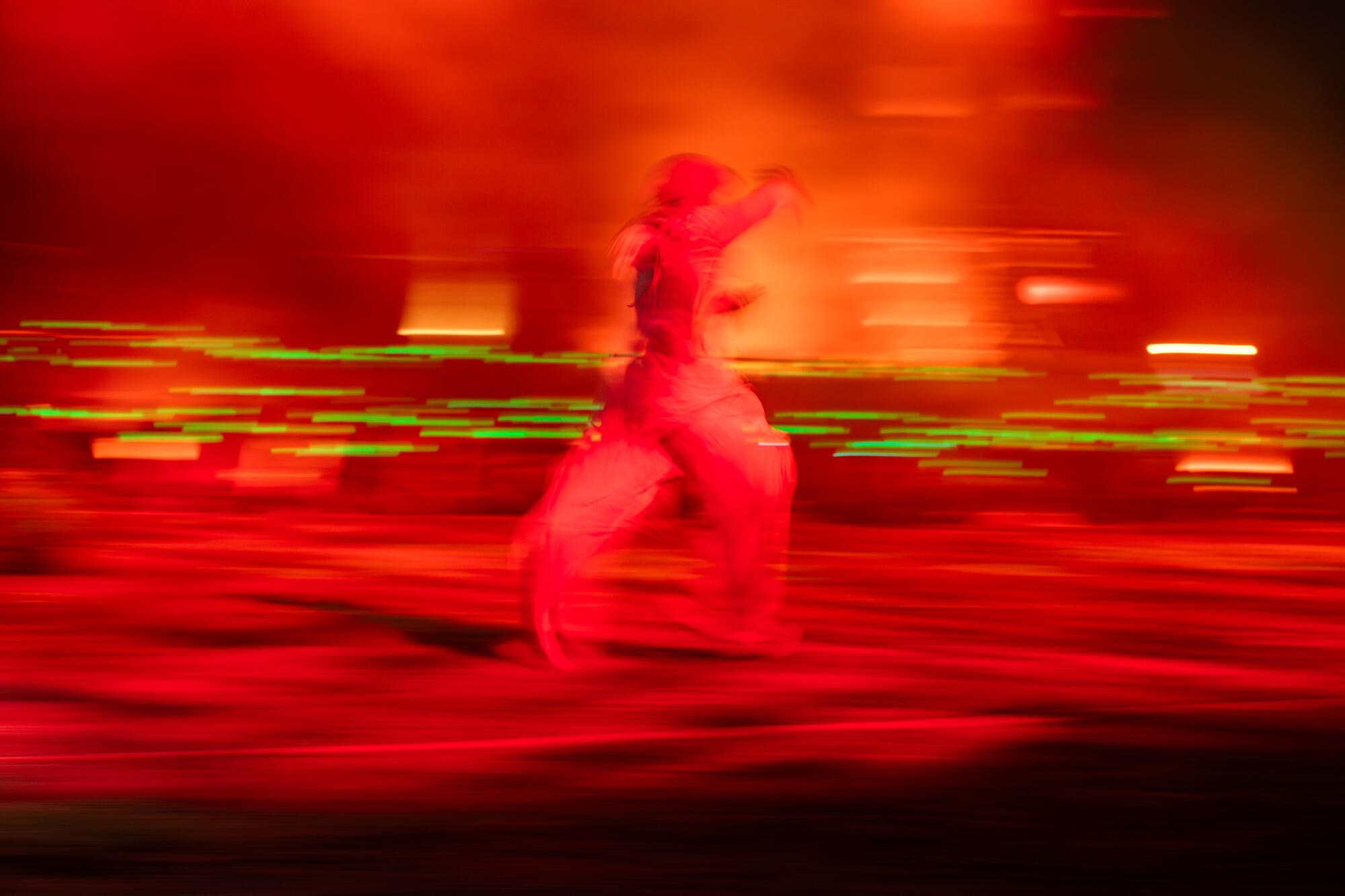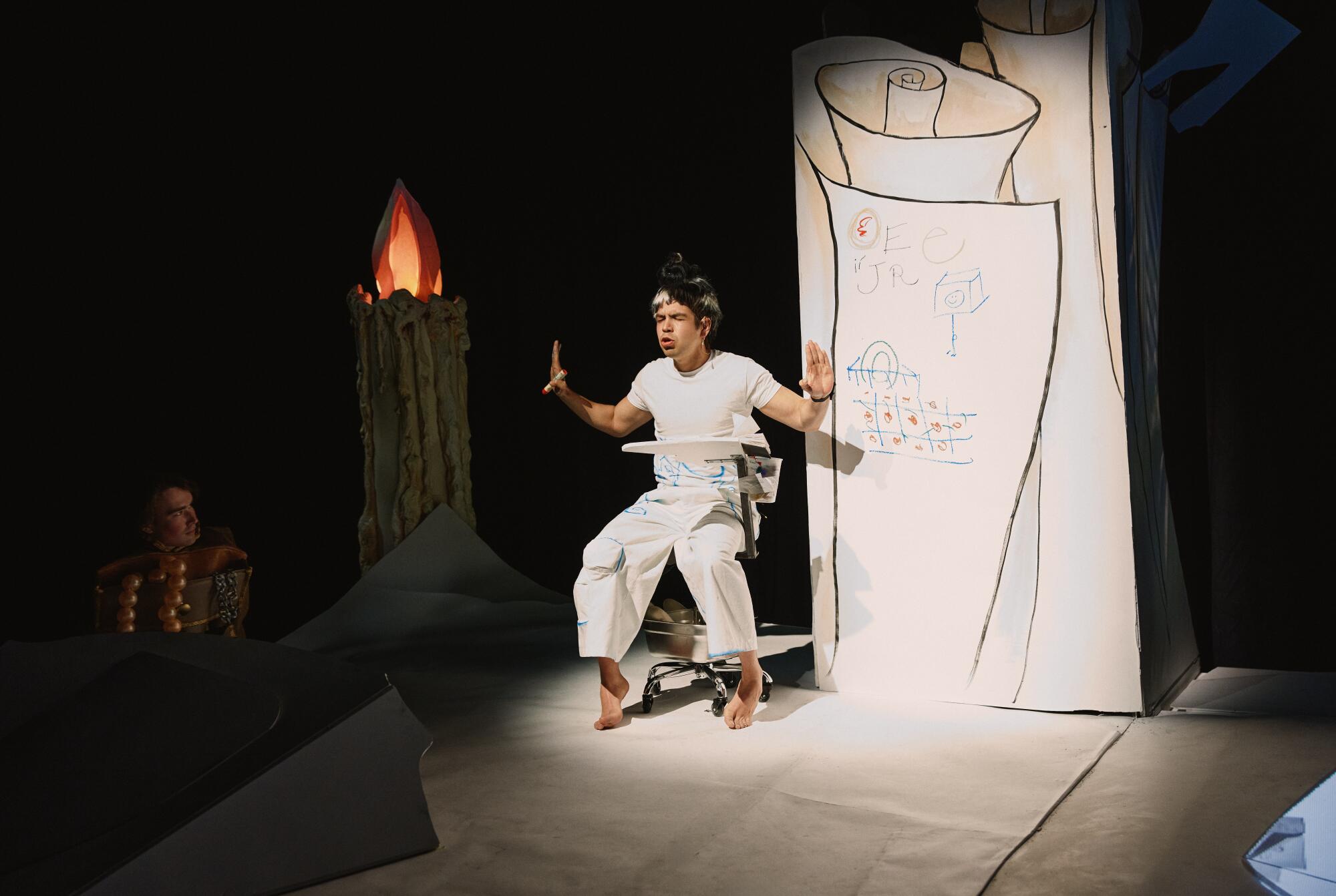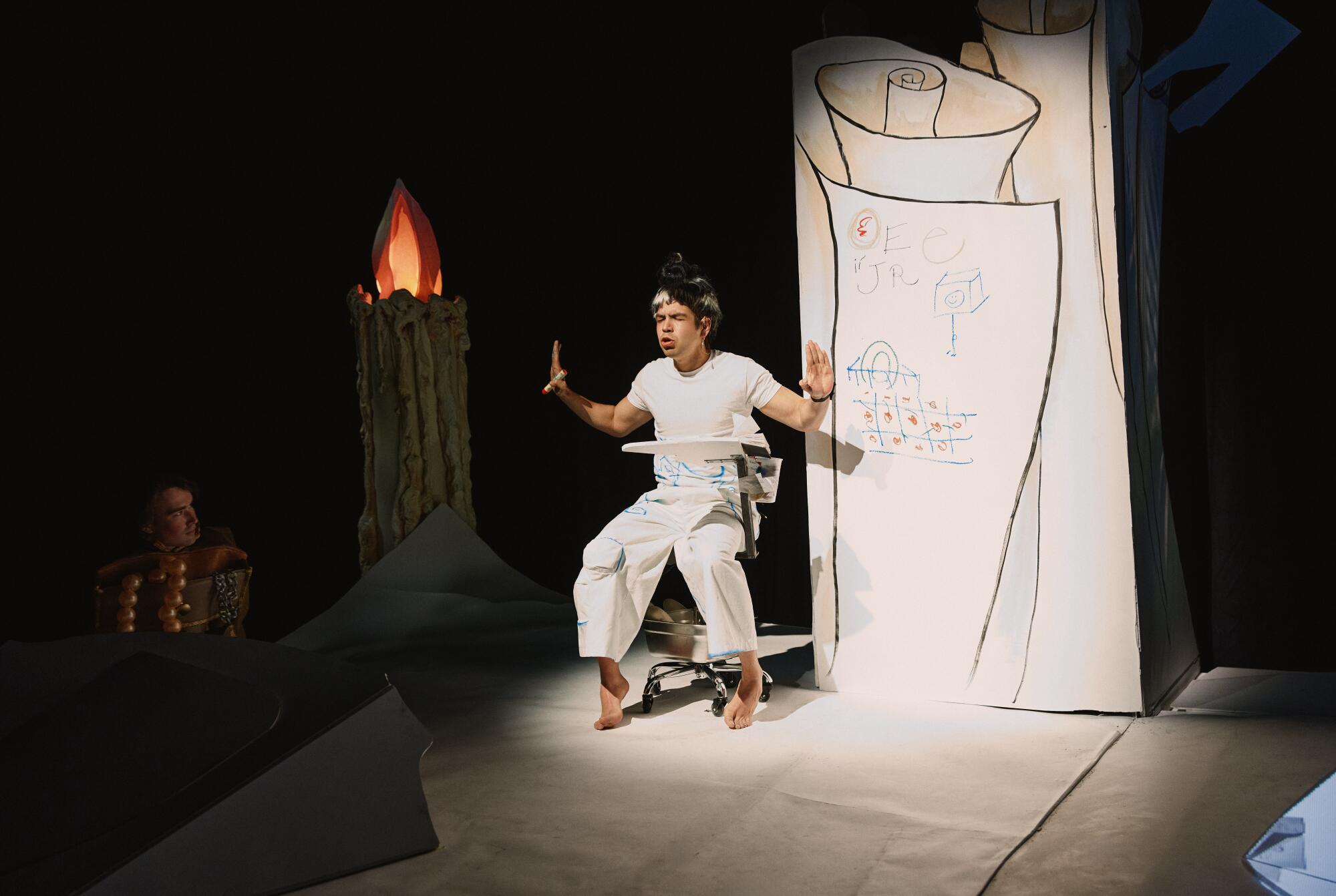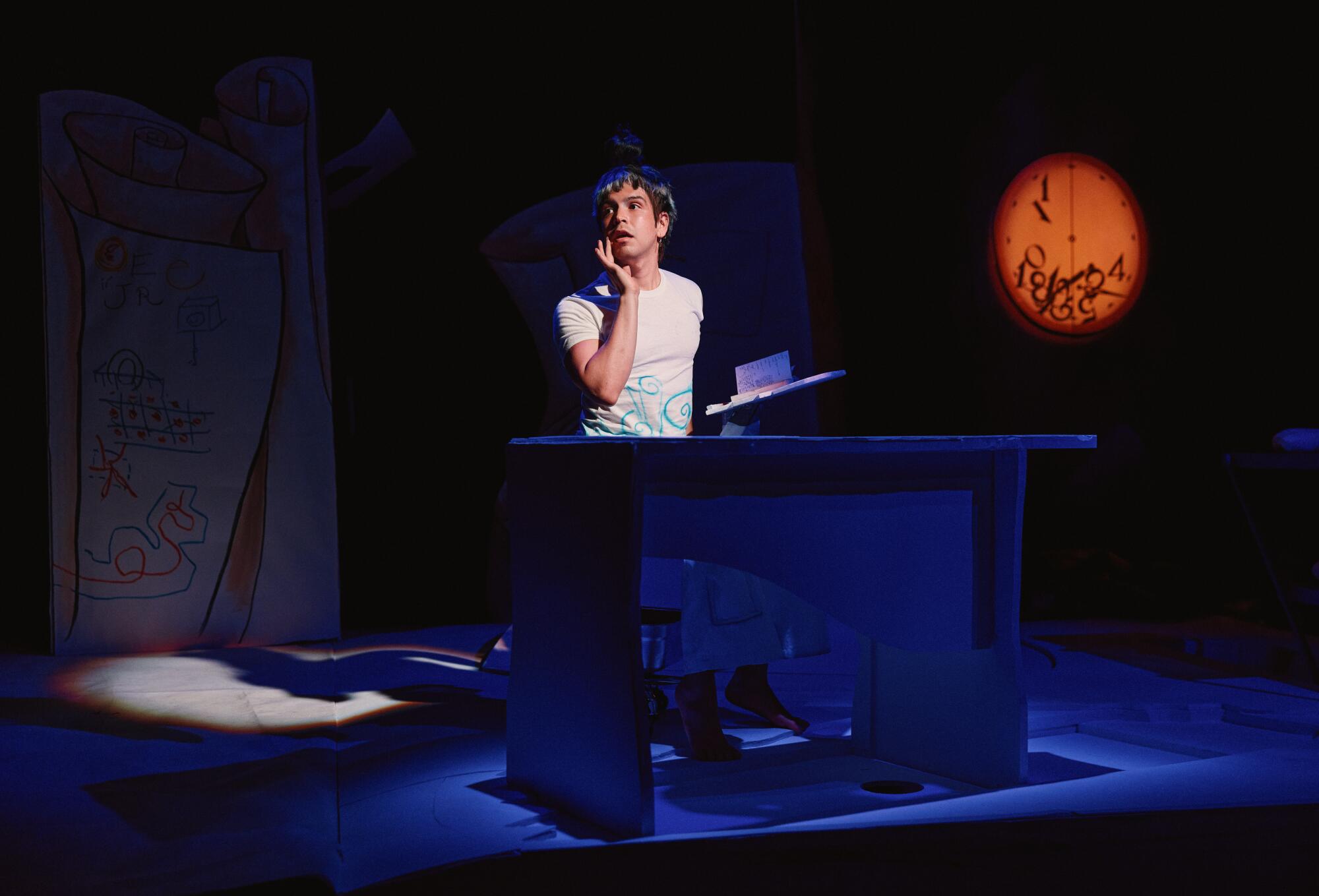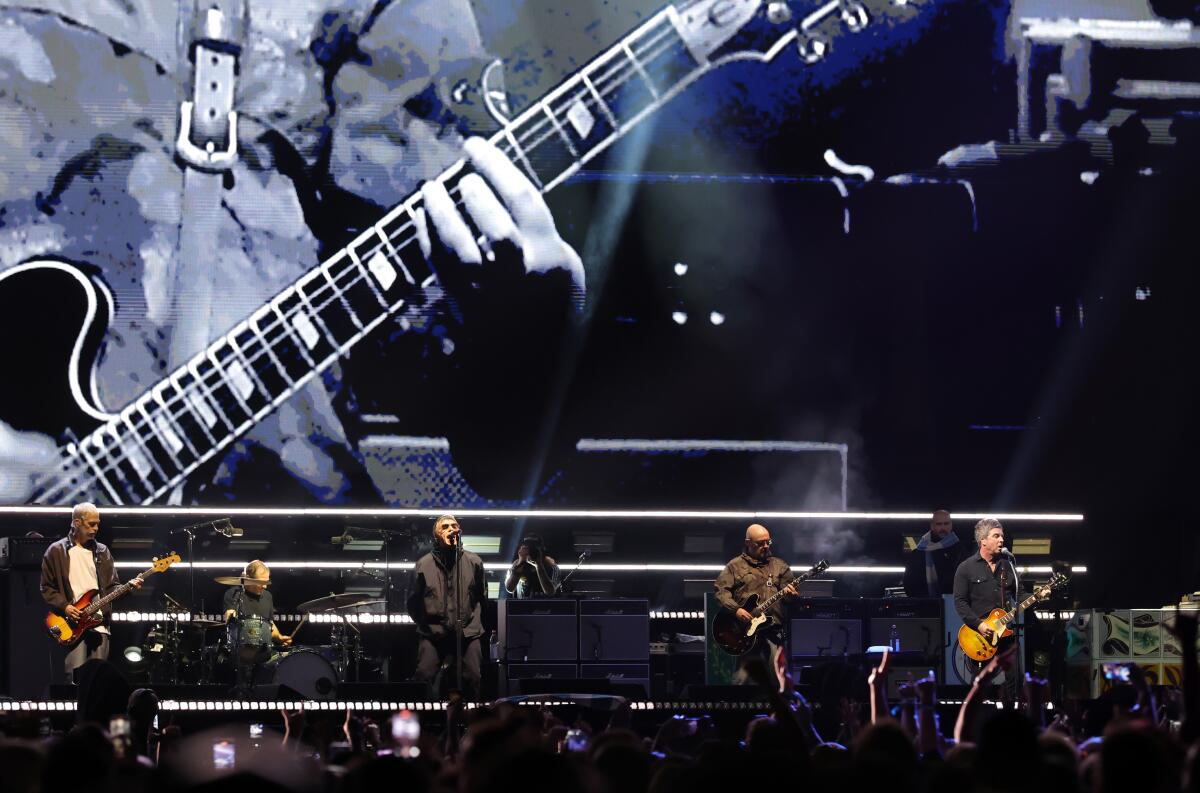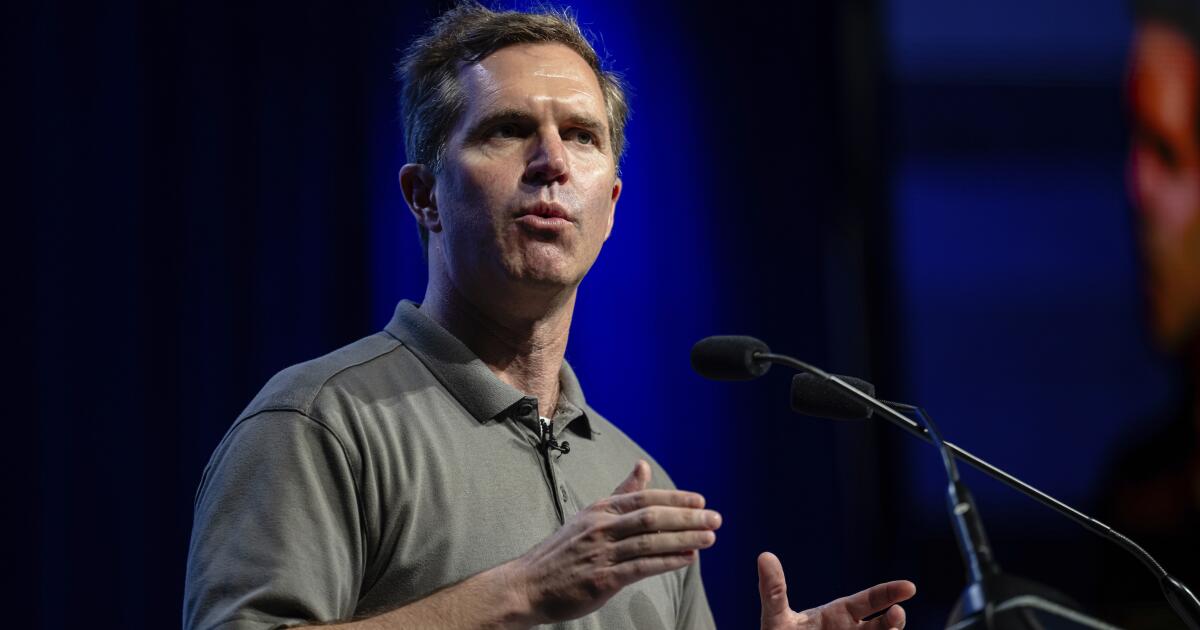YORBA LINDA — Not all the President’s men were there, but enough to make a strong showing.
Former Cabinet members Henry A. Kissinger and Richard G. Kleindienst were in attendance. So were Watergate figures Maurice Stans, once finance chairman for Nixon’s re-election committee, and G. Gordon Liddy, the convicted mastermind of the bungled burglary.
Former Nixon spokesman Ron Ziegler and Counsel Chuck Colson also paid their respects. Jo Horton Haldeman, the widow of Nixon’s chief of staff, H. R. Haldeman, was in the audience. And so was Rose Mary Woods, the secretary who took responsibility for creating the infamous 18 1/2-minute gap on a critical Watergate tape.
But so was George McGovern, who was among the first named on Nixon’s infamous “enemies list,” and whose presence on the funeral’s exclusive guest list spoke more eloquently of reconciliation than some who eulogized the 37th President.
“This has been a reconciling day for me and, I think, for a lot of other people,” said McGovern, who as the Democratic nominee waged an acrimonious political fight against Nixon for the presidency in 1972 and was buried in a electoral landslide. “I kind of really feel like I’ve lost an old friend, even though we were bitter political enemies through the years.”
Colson, who spent seven months in prison for obstructing justice during the Watergate conspiracy, also spoke of healing.
“I think he achieved in death something he never quite achieved in life–to bring the nation together,” said Colson. “Maybe the wounds of Watergate are now, twenty-some years later, finally healed.”
The guest list for the funeral cut across a broad spectrum of Nixon’s political and private life: Republicans and Democrats, friends and former enemies, family members, entertainers, sports figures, religious leaders and many, many longtime staffers.
At the Yorba Linda Community Center, where many of the guests had gathered before the funeral, the Nixon faithful–wearing either purple or yellow “RN” badges that were their tickets to the funeral–embraced like long-lost friends.
Liddy and Howard H. Baker Jr., the former Tennessee senator and ranking minority member of the Judiciary Committee that held televised hearings on Watergate, rode over to the funeral site together on a shuttle.
Robert H. Finch, who served under Nixon as secretary of health, education and welfare, smiled and shook hands with Donald H. Rumsfeld, the secretary of defense under President Gerald R. Ford.
“I think the Nixon family can feel very, very good about what he accomplished, and who all is here,” Rumsfeld said. “A broad cross-section of the world is recognizing him for what he did.”
From across the Nixon years came Alexander M. Haig Jr., Haldeman’s replacement as chief of staff, and Caspar W. Weinberger, former secretary of health, education and welfare who became Ronald Reagan’s defense secretary. James R. Schlesinger, Nixon’s defense secretary, and William P. Rogers, his secretary of state, joined a few dozen others from the Nixon presidency, including political columnist and presidential aspirant Patrick J. Buchanan, security adviser Brent Scowcroft and former Atty. Gen. Elliot L. Richardson.
Even former Vice President Spiro T. Agnew, who before Nixon’s resignation left office himself in disgrace under a criminal indictment, and his wife, Judy, attended the funeral. Agnew had asked Julie Nixon Eisenhower if he would be welcome at the funeral and was assured that his presence was important. On Wednesday, he was greeted warmly.
“I’m here to pay my respects for (Nixon’s) accomplishments,” said Nixon’s vice president, who resigned in 1973 after pleading no contest to tax evasion. “It’s time to put aside 20 years of resentment, which is what I’m doing at this moment.”
More than 100 members of Congress were on the guest list, including 47 U.S. senators, House Speaker Thomas Foley (D-Wash.), Senate Democratic Leader George Mitchell of Maine and the California congressional delegation.
Representatives from across the globe, from Angola to Argentina and Singapore to Seychelles, also were in force. In all, 86 countries sent dignitaries to pay respects.
But Nixon had other admirers, too, who had little if anything to do with politics. Comedians Bob Hope and Red Skelton and actor Buddy Ebsen attended with their wives. Former Rams star Roosevelt Grier also attended.
“It was a good send-off to Richard Nixon and his future life,” said Ebsen, who also attended Pat Nixon’s funeral last summer. “There was a feeling of togetherness. It stepped across party lines and it was a beautiful happening. We need that to get all of us together.”
Said Hope: “He was a hell of a guy. Playing golf, you learn a lot about a guy’s character. His was a great character.”
The guest list was indeed impressive, with names like Walter Annenberg, George Argyros, Jesse Helms, William Lyon, Ashraf Pahlavi, Bebe Rebozo, Nelson Rockefeller, Henry Segerstrom, Mary Roosevelt and James B. Stockdale sprinkled throughout.
Orange County also had a large contingent, including a gathering of state senators and assemblymen. All five Orange County supervisors were also invited. The local Republican Central Committee distributed 100 tickets to elected officials, volunteers and others affiliated with the local party, chairman Thomas A. Fuentes said, and just about everyone who wanted in got in.
“It was dignified, sentimental and memorable,” Supervisor Harriett M. Wieder said. “I think it was Kissinger who said that when you look at the quality of a person and whether they lived well, you look at the entirety of the life. That’s how I remember Richard Nixon.”
Mourners spoke about healing and the inevitability that Nixon, in death, may finally have been absolved of his perceived sins.
Former Vice President Dan Quayle joked that Kissinger had captured it perfectly when he predicted that Nixon “would’ve liked to have read and reread all the favorable reviews that he’s had this last week.”
The Rev. Robert Schuller said he was pleased to see those reviews.
“I’m very grateful to God for the respect that’s been shown (Nixon) this last week,” said Schuller. “Society does not forgive. People tend to hold on to their hurts.”
But since Nixon’s death, Schuller said, the public is beginning to “recognize Nixon’s greatness.”
Times staff writers Alicia DiRado, Doreen Carvajal and Eric Lichtblau contributed to this report.
On the Guest List
The official U.S. delegation, members of Congress and the foreign delegation attending the funeral of Richard Nixon, according to the White House:
U.S. PRESIDENTS AND THEIR WIVES
* Bill and Hillary Clinton
* George and Barbara Bush
* Ronald and Nancy Reagan
* Jimmy and Rosalynn Carter
* Gerald and Betty Ford
NIXON ADMINISTRATION OFFICIALS
* Spiro T. Agnew, former vice president
* Peter J. Brennan, former labor secretary
* Frederick B. Dent, former commerce secretary
* Elliot L. Richardson, former attorney general and health, education and welfare secretary
* William P. Rogers, former secretary of state
* Henry A. Kissinger, former secretary of state
* James R. Schlesinger, former defense secretary
* Caspar W. Weinberger, former HEW secretary
* William B. Saxbe, former attorney general
* Alexander M. Haig Jr., former chief of staff
* Brent Scowcroft, former Nixon aide
* Herb Stein, former economic adviser
* James T. Lynn, former HUD secretary
* Charles W. Colson, former special counsel to the President
* Dwight L. Chapin, former deputy assistant to the President
* Kenneth H. Dahlberg, former Midwest finance chairman of the Committee for the Re-election of the President
* Richard G. Kleindienst, former U.S. attorney general
* Ronald L. Ziegler, former press secretary
* G. Gordon Liddy, former White House aide
* Herbert W. Kalmbach, personal attorney to Nixon
* Robert H. Finch, former secretary of health, education and welfare
* Patrick J. Buchanan, speech writer
* Rose Mary Woods, former secretary
* Lyn Nofziger, former staff member
CLINTON ADMINISTRATION OFFICIALS
* Defense Secretary William Perry
* Army Gen. John Shalikashvili, chairman of the Joint Chiefs of Staff
* Thomas F. (Mack) McLarty, White House chief of staff
* Strobe Talbott, deputy secretary of state
* Carol Browner, Environmental Protection Agency administrator
* Phil Lader, White House deputy chief of staff
* Dee Dee Myers, White House press secretary
* David Gergen, counselor to the President
* Bruce Lindsey, senior presidential adviser
* W. Anthony Lake, national security adviser
* Lloyd Cutler, White House special counsel
* Robert Rubin, director of National Economic Council
* Mark Gearan, White House communications director
* Pat Griffin, White House congressional affairs lobbyist
MEMBERS OF CONGRESS
More than 100 members were on the list. Among them:
* House Speaker Thomas Foley, D-Wash.
* Senate Democratic Leader George Mitchell, D-Me.
* Sen. Minority Leader Bob Dole, R-Kan.
* Sen. Daniel Patrick Moynihan, D-N.Y.
* Sen. Barbara Boxer, D-Calif.
* Sen. John Danforth, R-Mo.
* Sen. Pete Domenici, R-N.M.
* Sen. Dianne Feinstein, D-Calif.
* Sen. Phil Gramm, R-Tex.
* Sen. Orrin Hatch, R-Utah
* Sen. Jesse Helms, R-N.C.
* Sen. Kay Bailey Hutchison, R-Tex.
* Sen. Richard Lugar, R-Ind.
* Sen. John McCain, R-Ariz.
* Sen. Sam Nunn, D-Ga.
* Sen. Bob Packwood, R-Ore.
* Sen. Alan Simpson, R-Wyo.
* Sen. Strom Thurmond, R-S.C.
* House Democratic Leader Richard A. Gephardt, D-Mo.
* House Republican Leader Robert Michel, R-Ill.
* Rep. Newt Gingrich, R-Ga.
* Rep. Carlos Moorhead, R-Glendale
* Rep. Bill Thomas, R-Bakersfield
* Rep. David Dreier, R-San Dimas
* Rep. Duncan Hunter, R-El Cajon
* Rep. Robert K. Dornan, R-Garden Grove
* Rep. Elton Gallegly, R-Simi Valley
* Rep. Wally Herger, R-Rio Oso
* Rep. Christopher Cox, R-Newport Beach
* Rep. Jay C. Kim, R-Diamond Bar
* Rep. Howard P. McKeon, R-Santa Clarita
* Rep. Ed Royce, R-Fullerton
OTHER INVITED GUESTS
* The Rev. Billy Graham, officiant
* Lynda Johnson Robb, daughter of former President Lyndon B. Johnson
* Sen. Charles Robb, D-Va.
* George McGovern, Nixon’s 1972 presidential opponent
* Bob Strauss, chairman of the Democratic National Committee when Nixon was President
* Vernon Jordan, former president of the National Urban League
* Pete Wilson, California governor
* Kenneth M. Duberstein, former White House chief of staff
* Dwayne Andreas, former ambassador to the People’s Republic of China
* Buddy Ebsen, actor
* Bob Hope, comedian
* Red Skelton, comedian
* Rupert Murdoch, media executive
* Thomas F. Riley, O.C. supervisor
* Harriett M. Wieder, O.C. supervisor
* Gaddi H. Vasquez, O.C. supervisor
* William G. Steiner, O.C. supervisor
* Roger R. Stanton, O.C. supervisor
* Thomas A. Fuentes, O.C. Republican Party chairman
* Dan Quayle, former vice president
* Walter F. Mondale, former vice president
* Walter Annenberg, former U.S. ambassador
* George Argyros, O.C. businessman
* Reza and Ashraf Pahlavi, self-proclaimed Shah of Iran and his aunt
* Richard Riordan, L.A. mayor
* Jack Kemp, former secretary of housing and urban development
* Bebe Rebozo, Nixon friend
* Henry Segerstrom, O.C. businessman
* James B. Stockdale, retired vice admiral
* The Rev. Robert H. Schuller
* Howard H. Baker, former Senate minority leader, chief of staff in Reagan Administration and the ranking minority member on the Senate Watergate Committee
* Ji Chaozhu, United Nations undersecretary general from China
* James A. Baker III, former secretary of treasury and state in Reagan and Bush administrations
FOREIGN COUNTRIES REPRESENTED
Angola, Argentina, Australia, Azerbaijan, Bahamas, Bangladesh, Belgium, Bosnia-Herzegovina, Brunei, Cambodia, Cameroon, Canada, Chile, China, Costa Rica, Croatia, Cyprus, Czech Republic, Denmark, Egypt, Ethiopia, Fiji, Finland, France, Germany, Greece, Guatemala, Honduras, Hungary, Indonesia, India, Ireland, Israel, Jamaica, Japan, Jordan, Kenya, Korea, Latvia, Lebanon, Liberia, Lithuania, Luxembourg, Macedonia, Maldives, Monaco, Morocco, Mozambique, Nepal, Netherlands, New Zealand, Nigeria, Norway, Oman, Pakistan, Paraguay, Philippines, Poland, Portugal, Qatar, Romania, Russia, Senegal, Seychelles, Singapore, Slovakia, Slovenia, Spain, Sri Lanka, Sweden, Switzerland, Suriname, Syria, Taiwan, Thailand, Tanzania, Togo, Tunisia, Turkey, United Kingdom, Uruguay, Venezuela, Yemen, Zambia.
Sources: Los Angeles Times, Associated Press
